It might be kind of weird at times, but we all have fears that we hate to talk about. For some, it might be the fear of public speaking or potentially the fear of death itself. Meanwhile, others have a deep fear of the creepy crawlies. These insects can come in all shapes and sizes, but the creepiest insects offer something much more. They literally bring about fear in those they are near.
To be honest, we can understand why this happens. Some look absolutely horrifying, while some come off as creepy due to blending into the environment so well. Yet it is not just their looks that can be creepy. We’ve seen what some can do to people over the years. Insects have inserted parasites into our bodies, made us pass out, or even killed others. In this list, we’re going to highlight them all. Be aware that we’re using traditional insects for this list too, therefore, spiders will not be part of it.
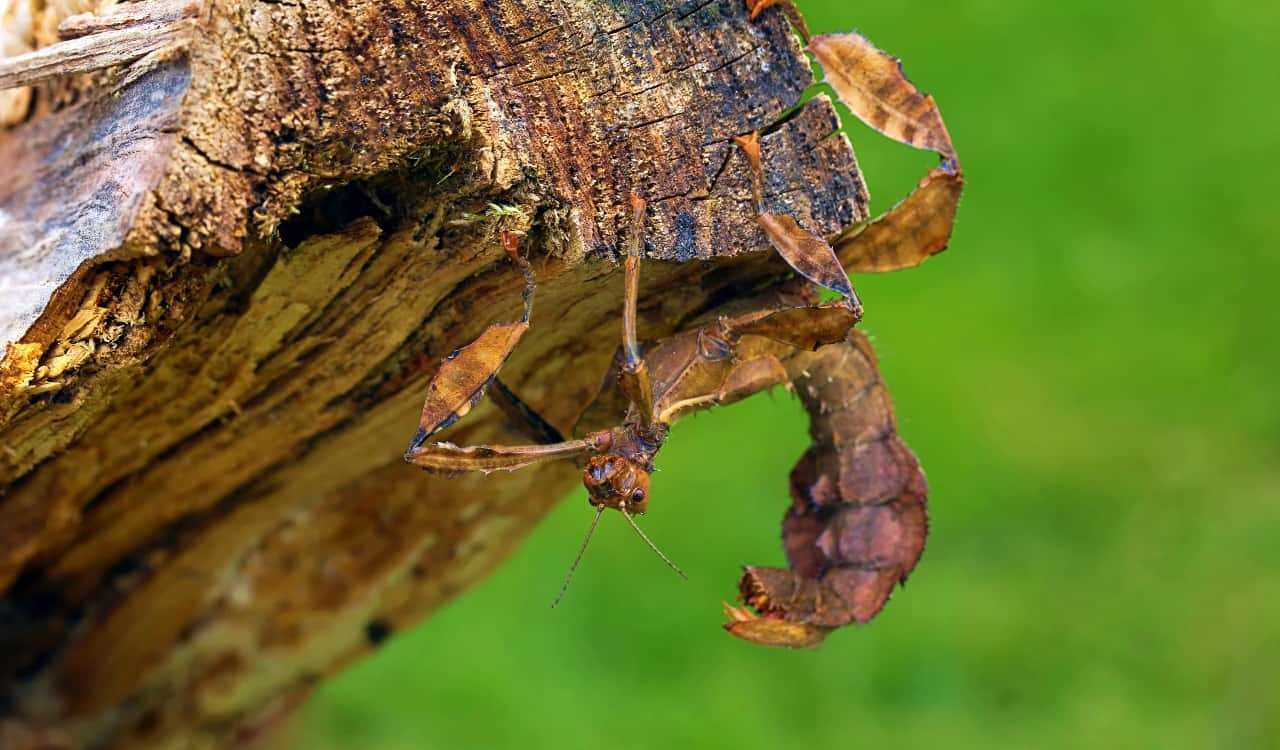
Australian Walking Stick
- Regions Found: Australia & New Guinea
- Scientific Order: Phasmatodea
The Australian Walking Stick gets its name honestly. This can make it pretty compelling to see when it’s away from outdoor areas. Obviously, it blends in well with its environment. The Walking Stick species has managed to survive for thousands of years, mostly due to its camouflage abilities. However, there are times when this does not work.
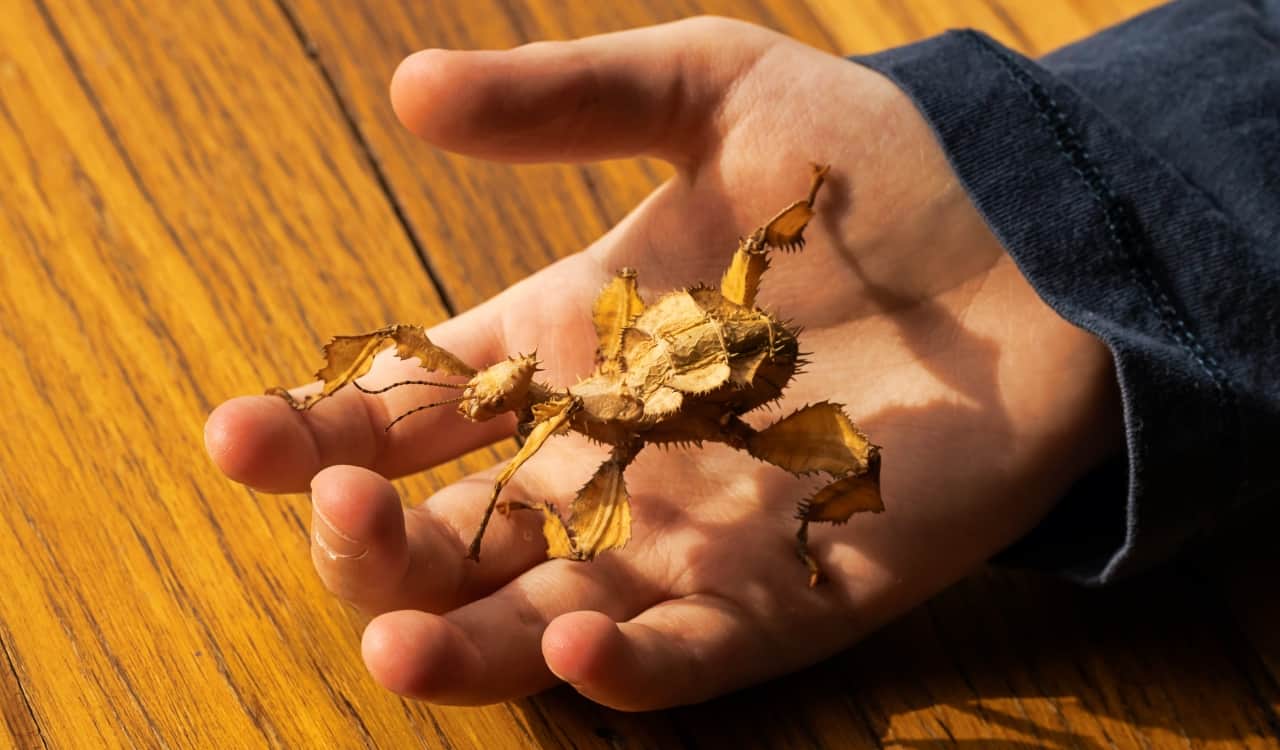
When threatened, the species takes on a “threat pose.” To do this, it stands on the front and middle legs, pointing their abdomen up or to the side. This makes it somewhat resemble a scorpion, making predators assume as much. Their back legs are pretty powerful, yet the sharp spines it possesses are capable of protecting it well too. Those can pierce human skin, so other animals have to keep a close on them. Overall, they look creepy but don’t affect humans very often.
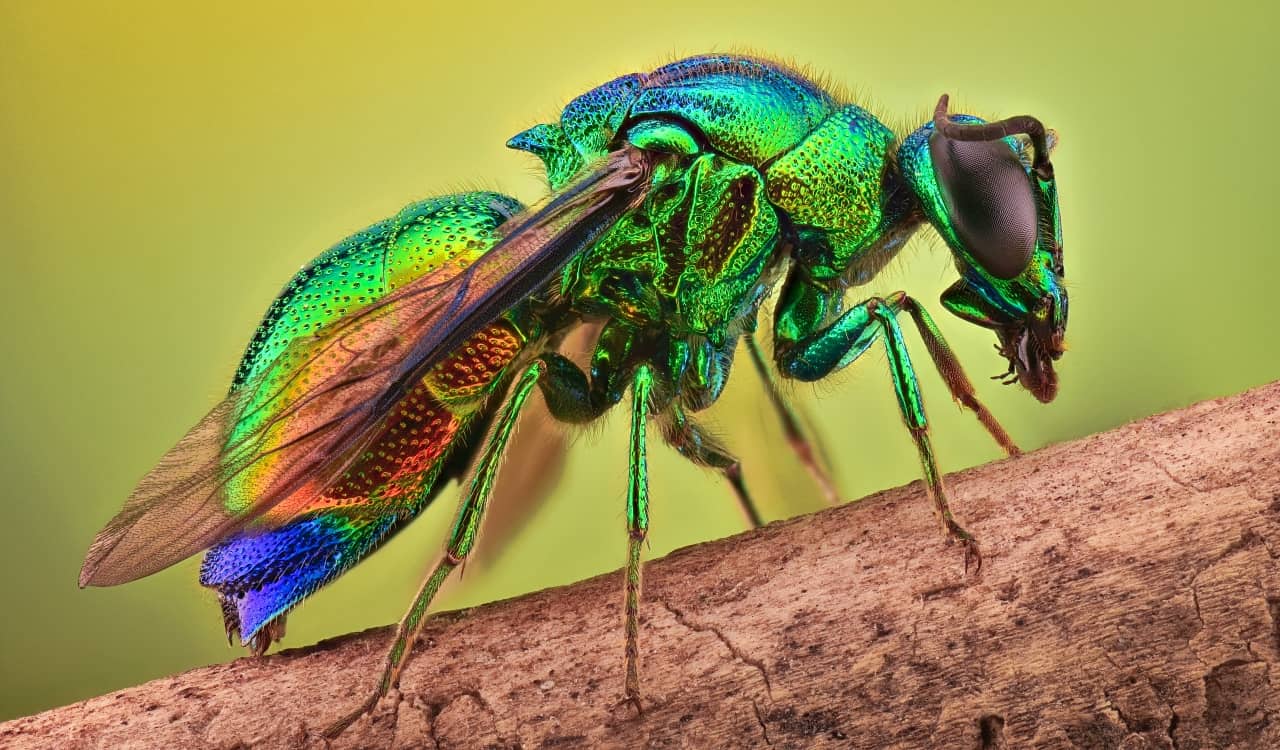
Jewel Wasp
- Regions Found: Tropical Regions Of Africa, South Asia, Southeast Asia, and Pacific Islands
- Scientific Order: Hymenoptera
If you’re a cockroach, beware of the Jewel Wasp. Once a female wasp mates with a male, the female will actually seek out and sting a cockroach it finds right in its brain. It will make the cockroach immobile, but it can still feel things. While paralyzed, the Jewel Wasp will take the cockroach back to its burrow where it will lay its eggs inside of the roach’s abdomen.
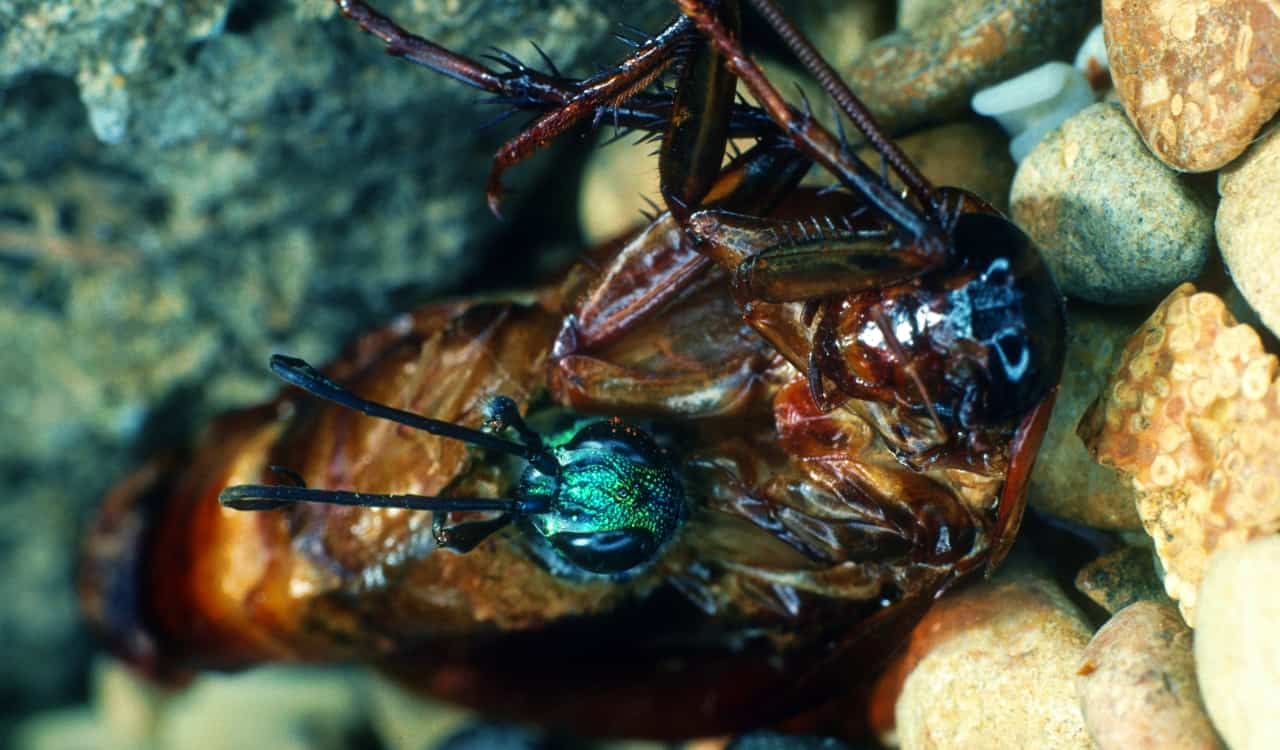
The paralysis eventually wears off and the wasp will let the cockroach go, but it follows the insect home! This is where it makes our creepiest insects list. It waits until the roach goes inside and then barricades the roach inside its home. The roach is trapped, then three days later the wasp larva hatch inside the roach. Once they do, the larva will eat their way out of the roach from the inside. Again, the roach is able to feel all of these things happening to it and simply cannot stop it from taking place!
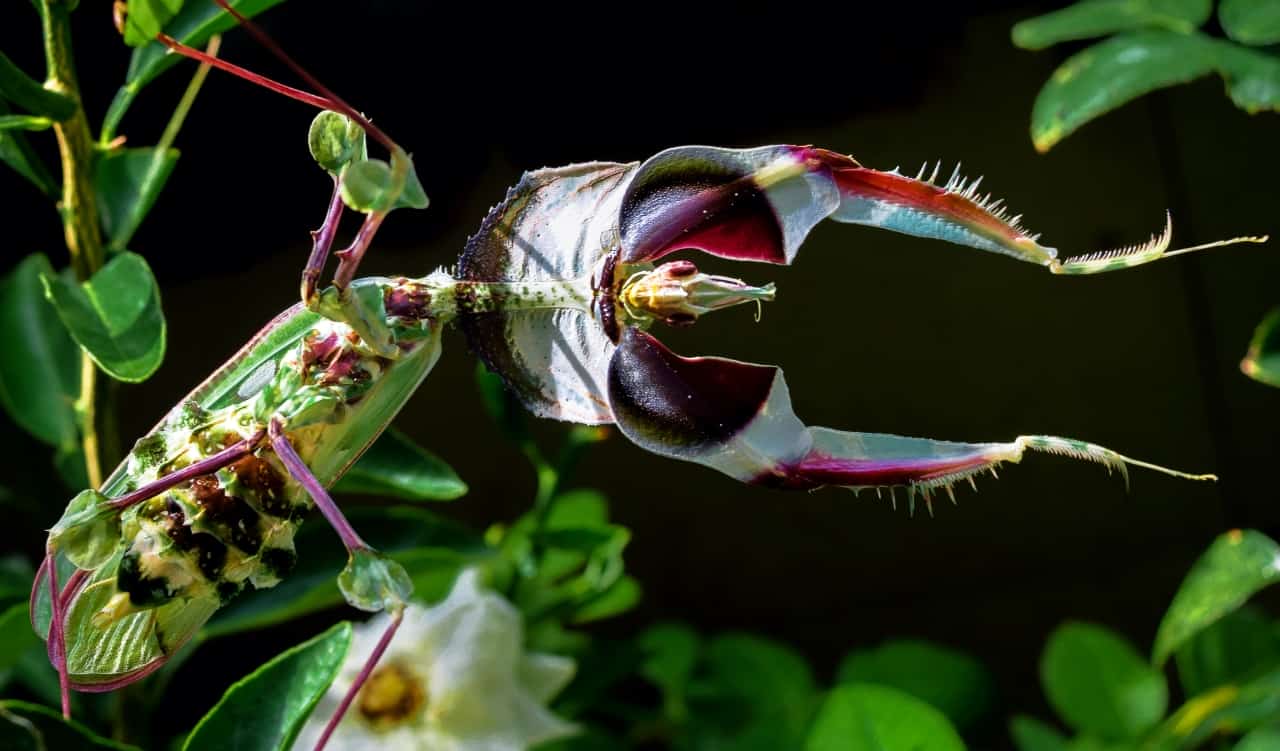
Devil’s Flower Mantis
- Regions Found: North Africa, Southern Asia, Middle East, Mediterranean Territories, Canary Islands
- Scientific Order: Mantodea
The Devil’s Flower Mantis is a species of praying mantis that is among the creepiest insects people come across. Due to their unique look, most people in the Americas have never seen anything like them. The species looks absolutely horrifying. It’s as if some sort of alien species came down from space.
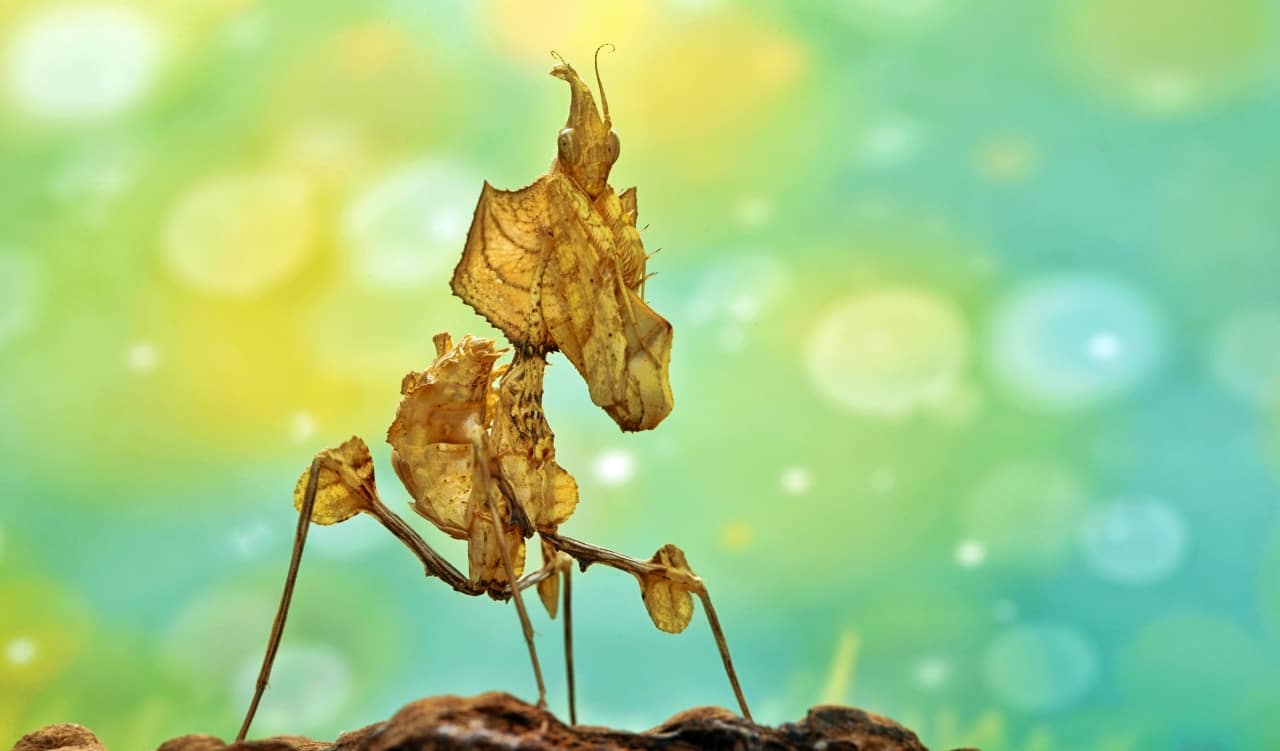
Did we not notice the species come down because they are too small or something? While they have a few names, the “Devil’s Flower Mantis” has stuck more than most. Why? The true origin is not agreed upon, but most tend to believe that the head can look like it has devil horns. While they can blend in well to most environments, they come in several different color patterns. This helps the species look very different in various regions worldwide.
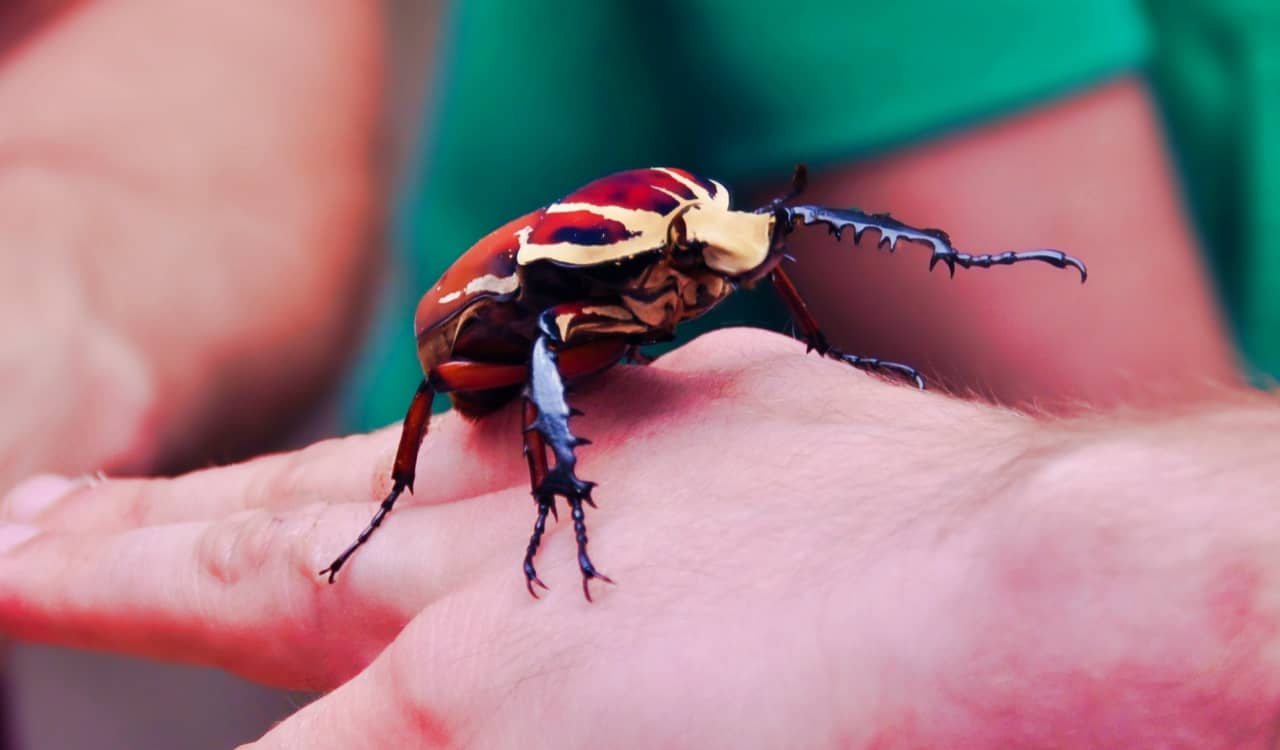
Goliath Beetle
- Regions Found: African Tropical Forests
- Scientific Order: Coleoptera
If you want to see something that’ll make you freak out a bit, we present the Goliath Beetle. While Beetles are not always very concerning creatures, this Beetle should always be on your radar. What makes them some of the creepiest insects on Earth is not just the size. It’s also how different they are from normal insects. Scientists have been studying this beetle species for many years now.
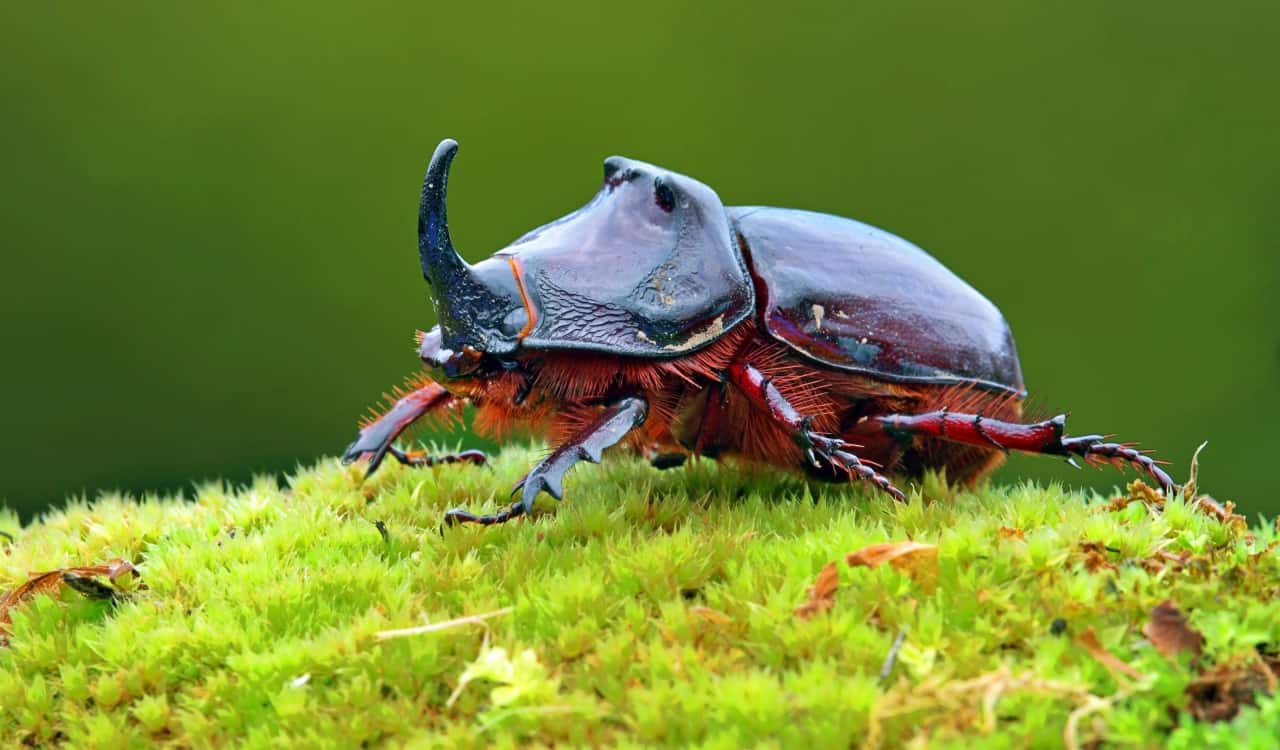
In those studies, they found that a beetle can be raised from when it hatches to full maturity on nothing but dog food and cat food! It is the only pure insect that this can be done with. In the wild, they feed mostly on fruits and tree sap. However, they have also been known for preying on other insects at times too. In terms of sheer size, bulk, and weight. The Goliath Beetle is among the largest insects on the planet today.
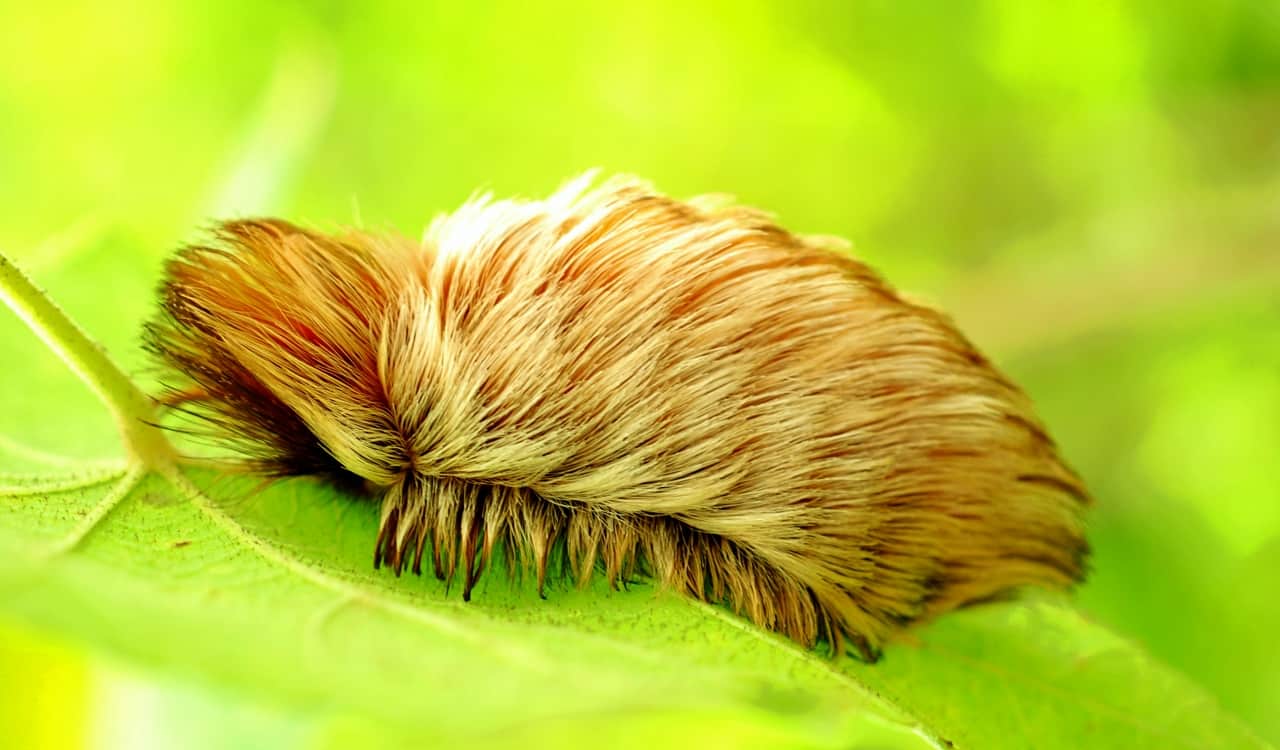
Puss Caterpillar
- Regions Found: North & South America (mostly warmer climates)
- Scientific Order: Lepidoptera
The Puss Caterpillar is certainly one of the creepiest insects we’ve ever seen. It looks very odd, right? You’d be forgiven for mistaking it as a large hairball. It certainly does appear that there is hair all over its body. They are actually covered in setae, which is “hair-like” but not actually hair. This is also where they get their name, as they resemble a “pussycat.” The species come in various colors too!
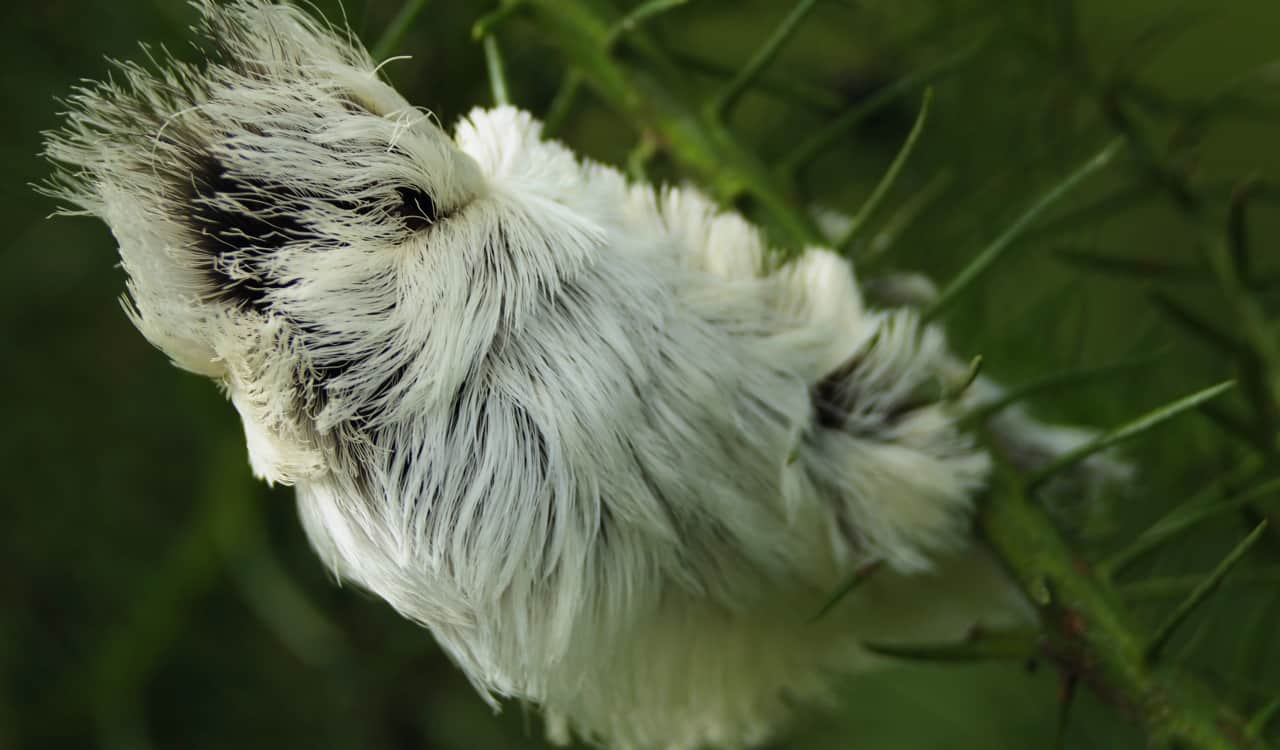
You might see it in grayish-white, golden brown, or charcoal grey. You’ll also notice the bright orange streak too. Their “hair” look comes very early in its life, giving it the cotton-like look you see here. Don’t pet this insect for sure. Hidden within the hair are venomous spines that can be extremely painful when they touch human skin, making them semi-dangerous to humans. When this species eventually turns into a Moth, it maintains the hairy look.
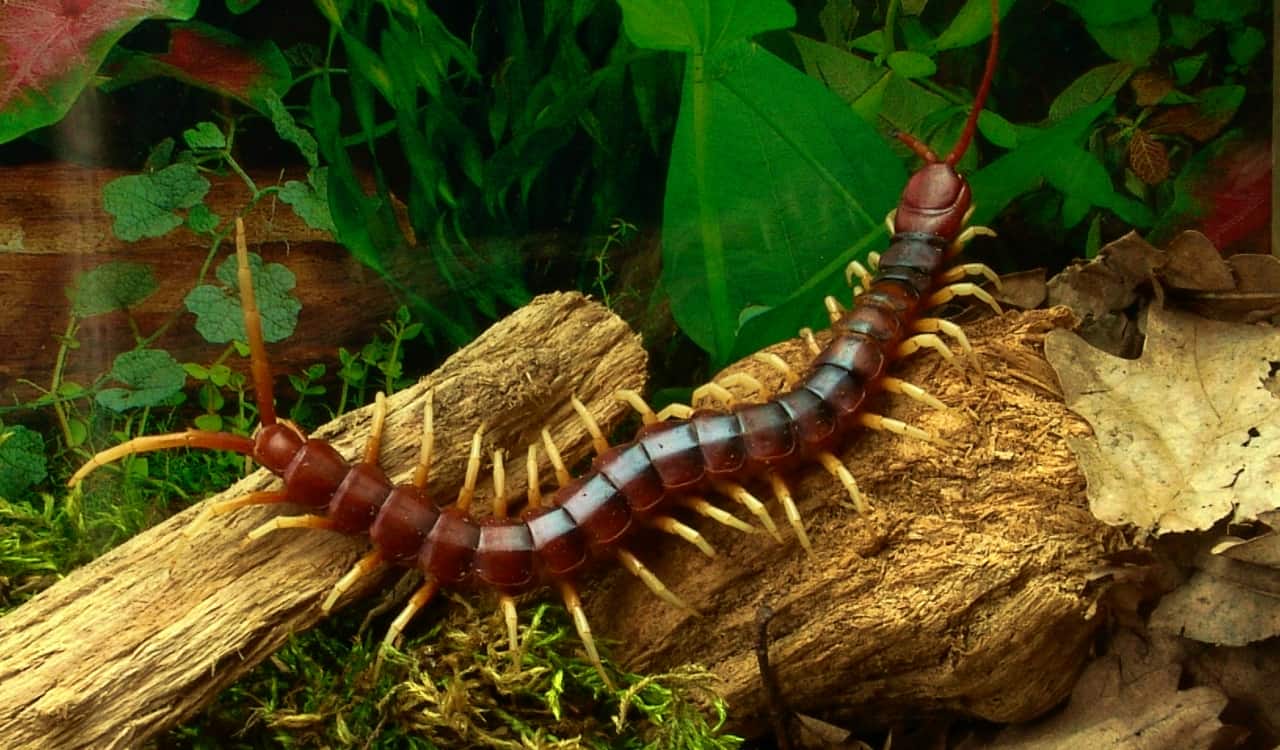
Amazonian Giant Centipede
- Regions Found: South American Amazon, Mexico, Peurto Rico, U.S. Virgin Islands, Hispanola
- Scientific Order: Scolopendromorpha
The Amazonian Giant Centipede is officially the largest centipede species on the planet today. When measured, a full-grown version reaches up to 30 centimeters (or 12 inches/1 foot). In some insects, size might not be of importance. However, the large nature of this centipede means it must eat a lot. Moreover, it means they can prey on animals that most insects could never prey on.
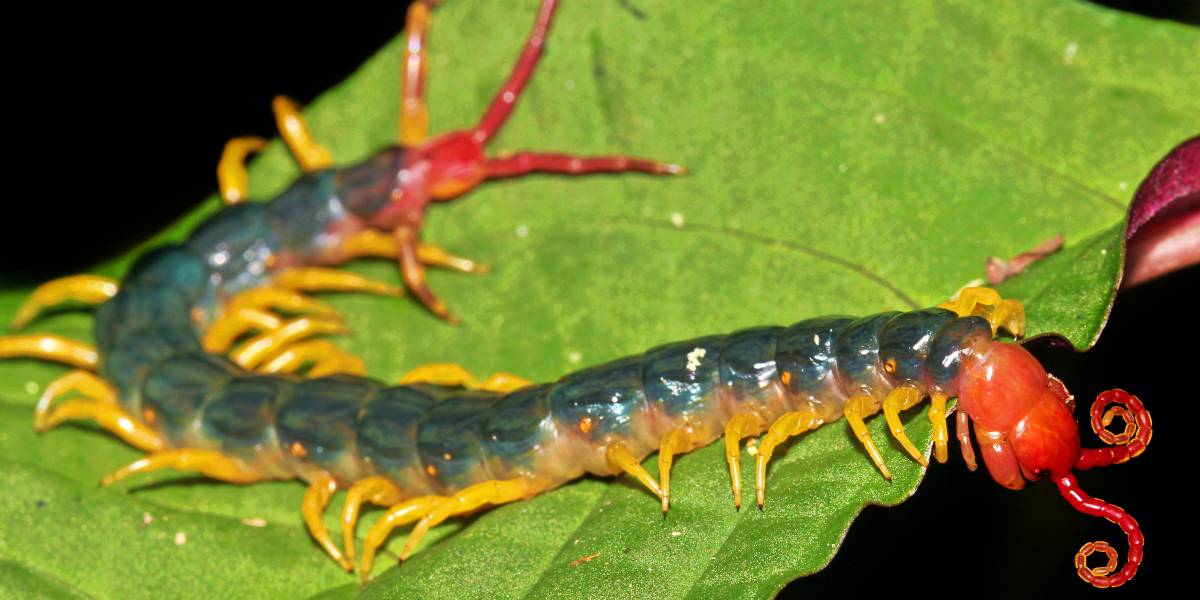
The Centipede will go after many insects, of course. Yet, what makes it one of the creepiest insects on Earth, is the fact that it can also prey on several reptiles and amphibians too. You could literally see it attack a regular-sized frog, without a problem. The species is even capable of taking down many birds and snakes. On top of that, they do have a venomous bite. Most of the time, this does not kill humans. However, at least one death has been reported.
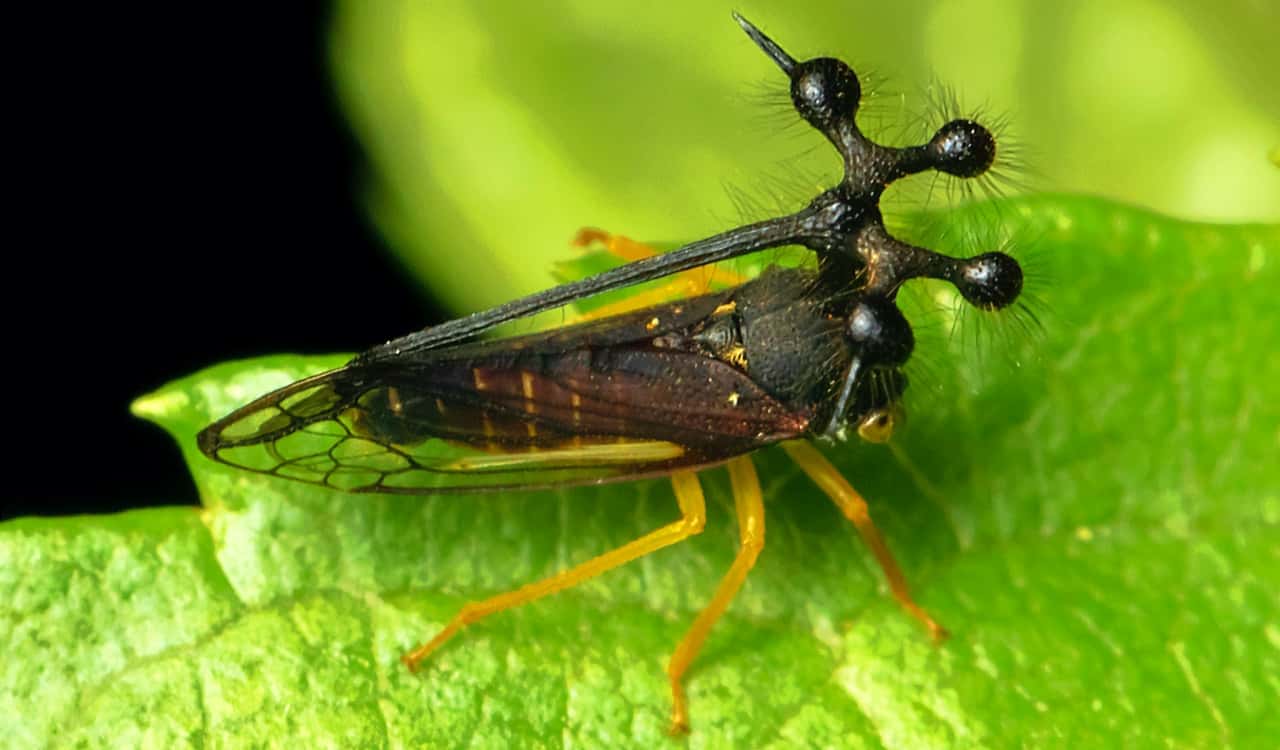
Brazilian Treehopper
- Regions Found: Africa, Asia, Australia, North & South America
- Scientific Order: Hemiptera
In spite of their name, the Brazilian Treehopper is not only found in Brazil or even South America at large. They can be found all over the world. You’d be forgiven for wondering if this species was also an alien, based on how it looks. Unlike many insects, females actually lay their eggs inside of plants. You’ll see them in the plant tissue or directly at the surface.
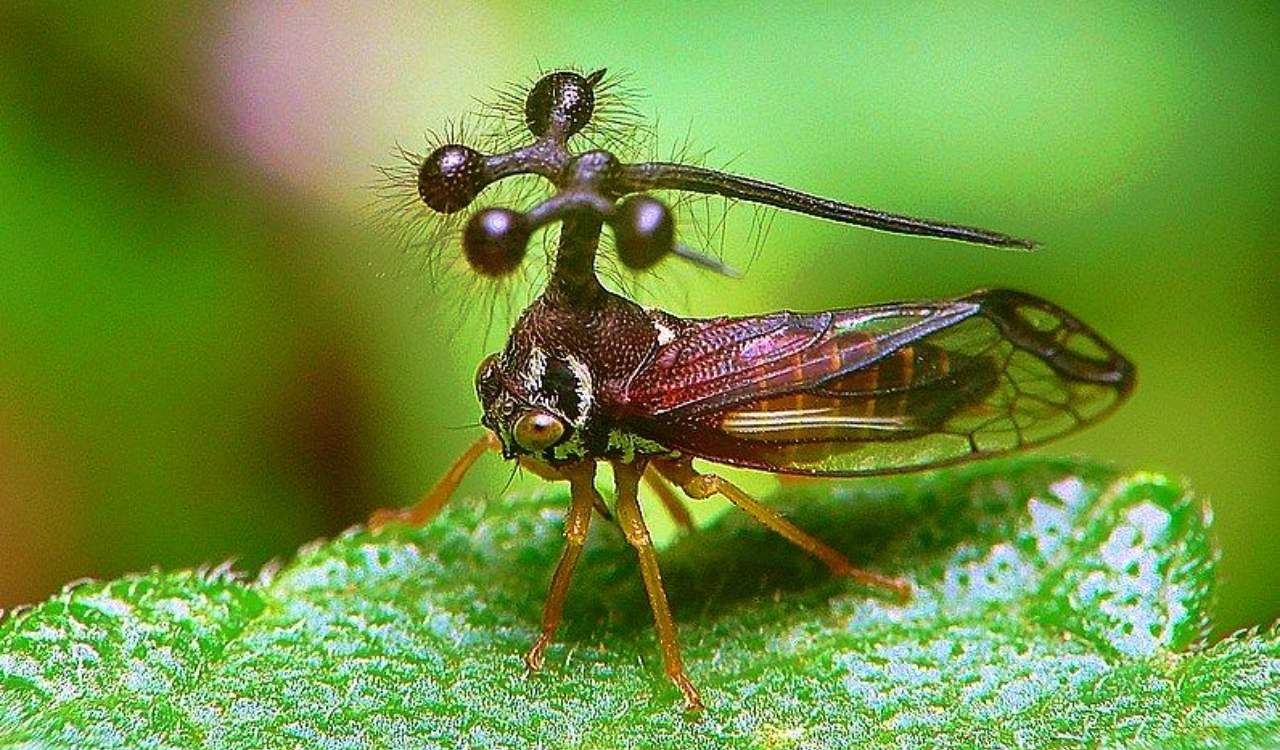
They get their “treehopper” name mostly due to going from tree to tree to suck out sap for food. However, the species does not “hop” to these trees. Regarding the appendages on its head, scientists are not certain why they are there. It surely helps them make our creepiest insects list, but is there another reason? Some scientists assume that it could be there to deter potential predators.
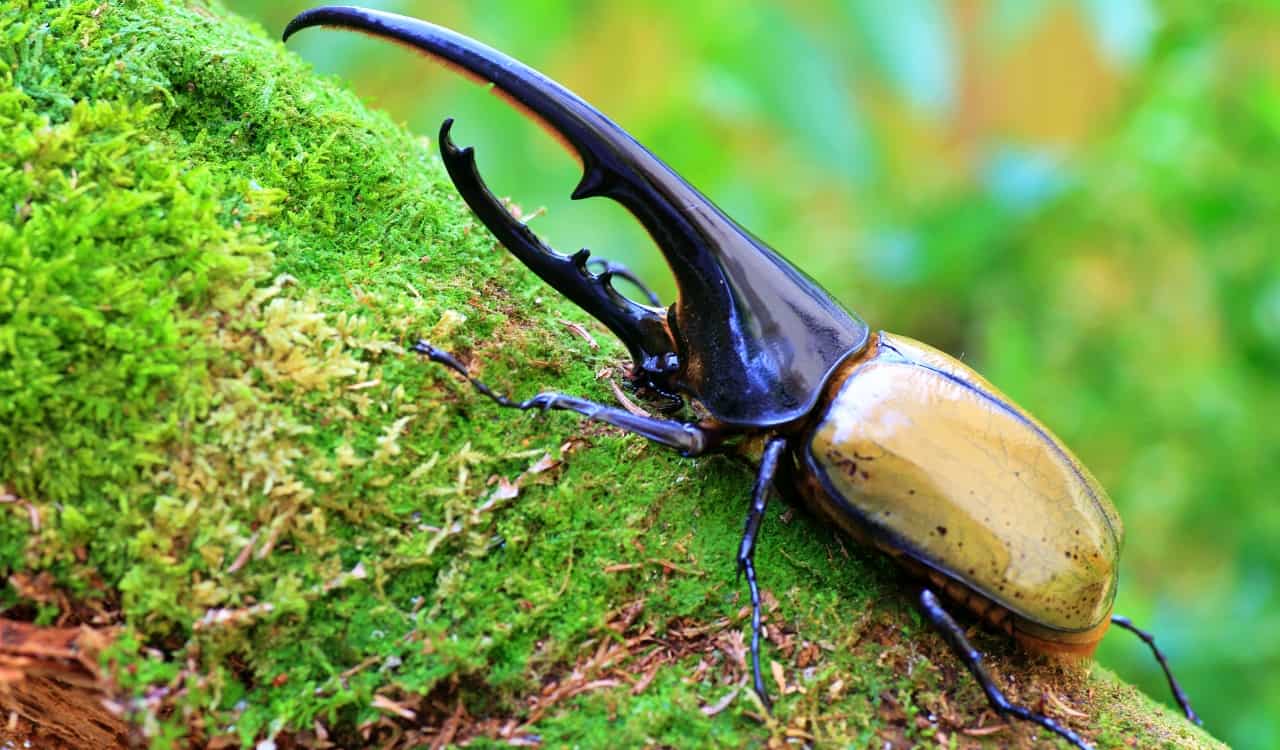
Hercules Beetle
- Regions Found: Central & South America, Caribbean Islands
- Scientific Order: Coleoptera
On an interesting note, the Hercules Beetle happens to be the oldest beetle species still around today. Well, after Paul McCartney obviously. It is part of the “rhinoceros beetle” line, which gets its name from its infamous horn. Of course, the Hercules Beetle is the largest of the species. On top of that, it’s also among the largest flying insects on the planet too.

If that is not enough to put it on the creepiest insects list, just look at how truly large it is. While it might not seem massive to say 7 inches in length, measure that out on your own. Now factor in around 3 inches in width. Then add in the look and horn of the Hercules. Oh yeah, about that “Hercules” name. Scientists found that this species can carry from 100 to 870 times its body weight mass. That’s 22lbs to over 100lbs!
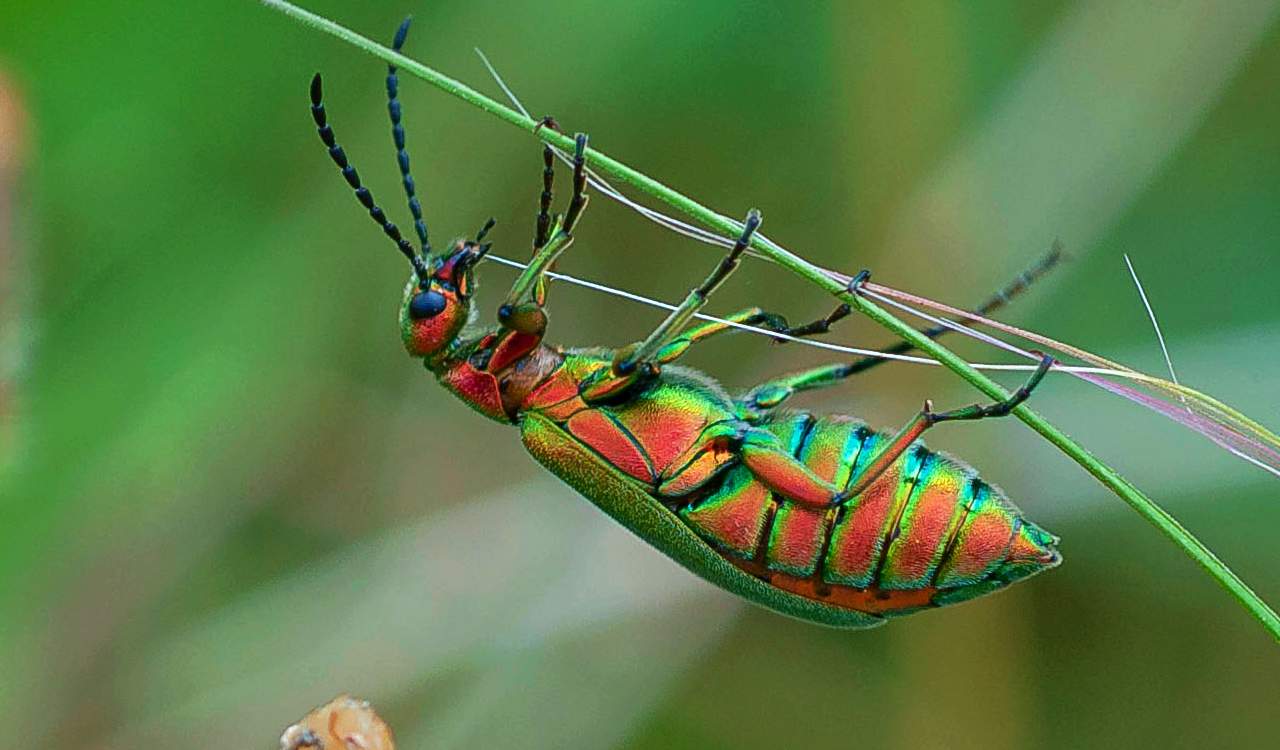
Spanish Fly
- Regions Found: Southern Europe, Central & Southern Asia
- Scientific Order: Coleoptera
Interestingly, the Spanish Fly is not actually a fly nor even Spanish. In fact, this is actually a beetle. So, what’s with the name? In the 1800s, people often misunderstood what some insects were. On top of this, the species produces a chemical known as terpenoid cantharidin. It used to be that people thought it was an aphrodisiac. It would be sold after putting it into other things within Spain, thus giving it the “Spanish” part of its name.
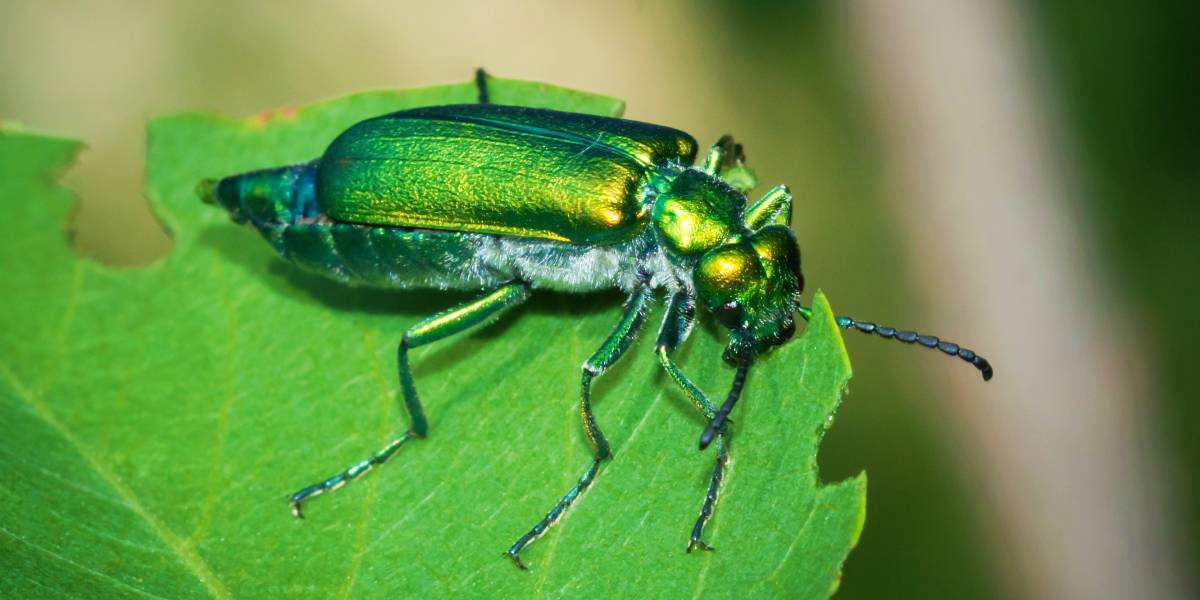
However, we now know that cantharidin is dangerous and incredibly toxic. In the wild, males are the only ones of the species to naturally have it. Females have a small portion upon mating but do not contain much if any otherwise. When bitten by the beetle, a human adult likely will not die. The chemical one produces is not enough to kill. One might bleed or develop a blister from it. Yet the chemical, when given in a higher dose, could potentially kill anyone.
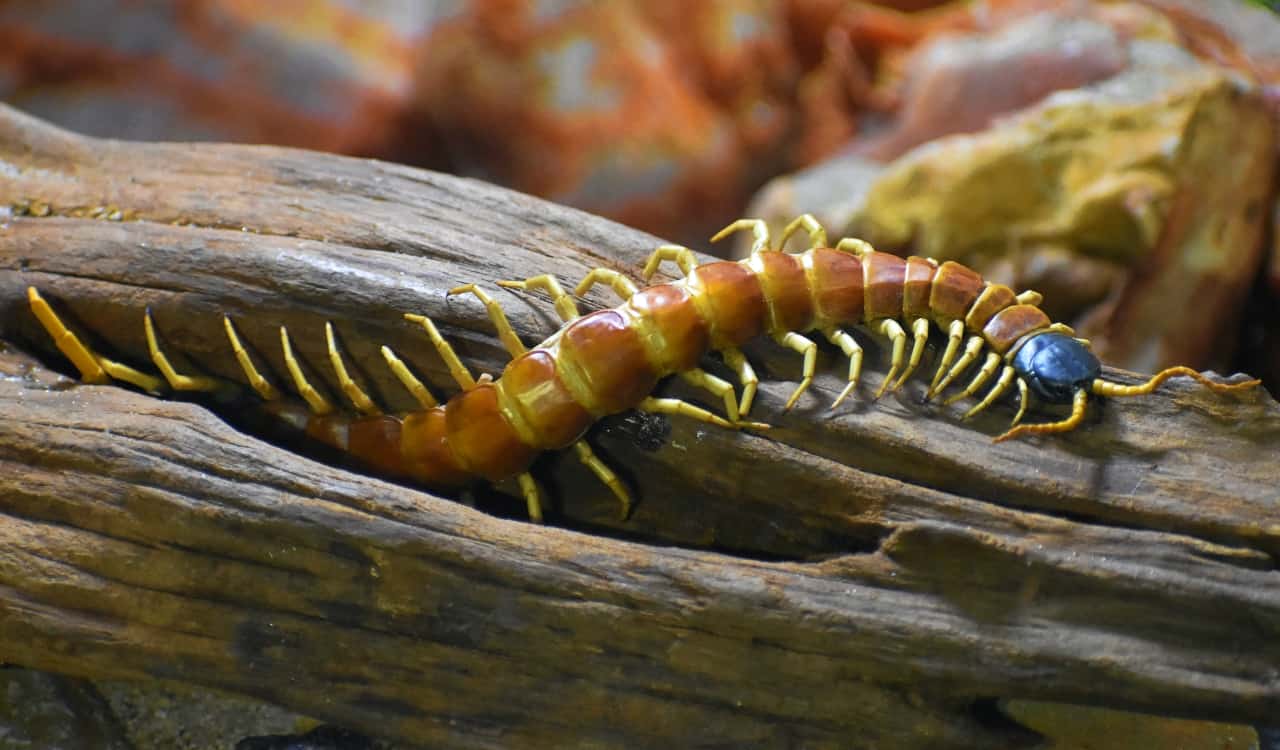
Giant Desert Centipede
- Regions Found: Southern United States, Upper-To-Mid Mexico
- Scientific Order: Scolopendromorpha
The Giant Desert Centipede seems like nothing something to fear for some. Those people are simply wrong. It’s not just one of the creepiest insects on the planet, but also among the most dangerous. While they don’t tend to be a major threat to humans, their venom is capable of harming us. Yet the creepiest thing about them is that they actually molt away their exoskeleton.
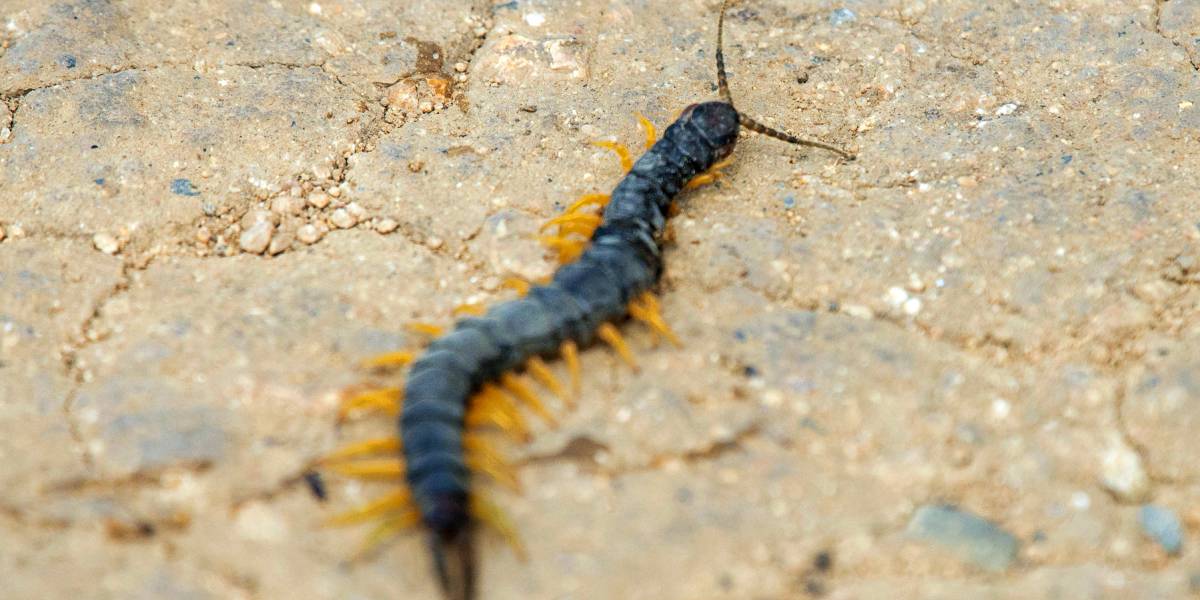
Young centipedes, known as nymphs, shed and molt away their exoskeleton as they grow and mature. Each time they grow into a new stage in their life cycles, they yet again molt away their exoskeleton. When they successfully do this, they grow between 10 to 18 new legs. While they have been documented to live up to 5 years in the wild, many believe they could survive far longer. Especially if they are given the proper food supply and do not sustain significant injuries.
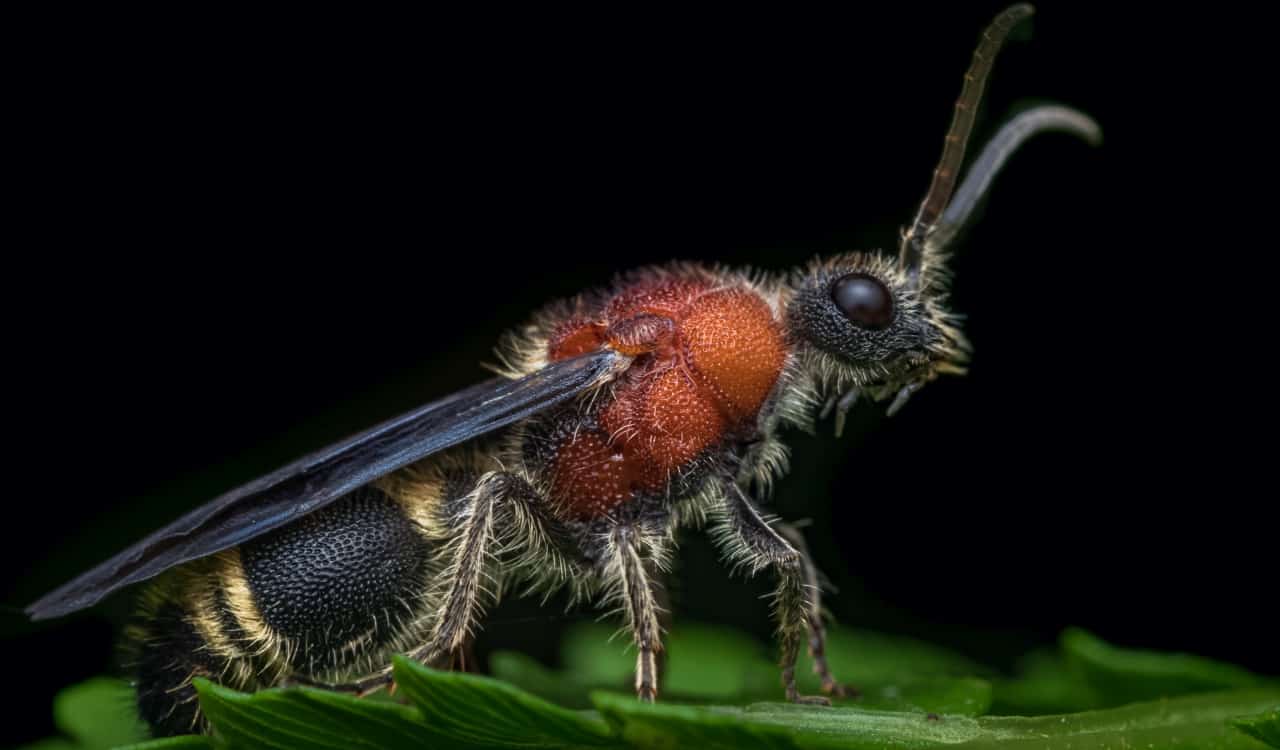
Velvet Ant
- Regions Found: North & South America, Europe
- Scientific Order: Hymenoptera
Many actually find the Velvet Ant beautiful. Yet in nature, typically the more beautiful something is, the more dangerous it happens to be. The Velvet Ant is no exception. Of course, this is not an ant, rather, it’s a species of wasp. They differ heavily between male and female versions. For example, male velvet ants can fly and have wings. Females, however, are not capable of flight. This very well could be why they were assumed to be ants.

They actually are solitary creatures, so just seeing a female is possible. What puts them on our creepiest insects list is ultimately their sting. It is one of the most painful on the planet. When animal expert Coyote Peterson took a sting from it, he described the pain as throbbing and radiating. He developed bright red blotches and swelling, with pain that lasted around 30 minutes. Beauty is dangerous, people. Remember that!
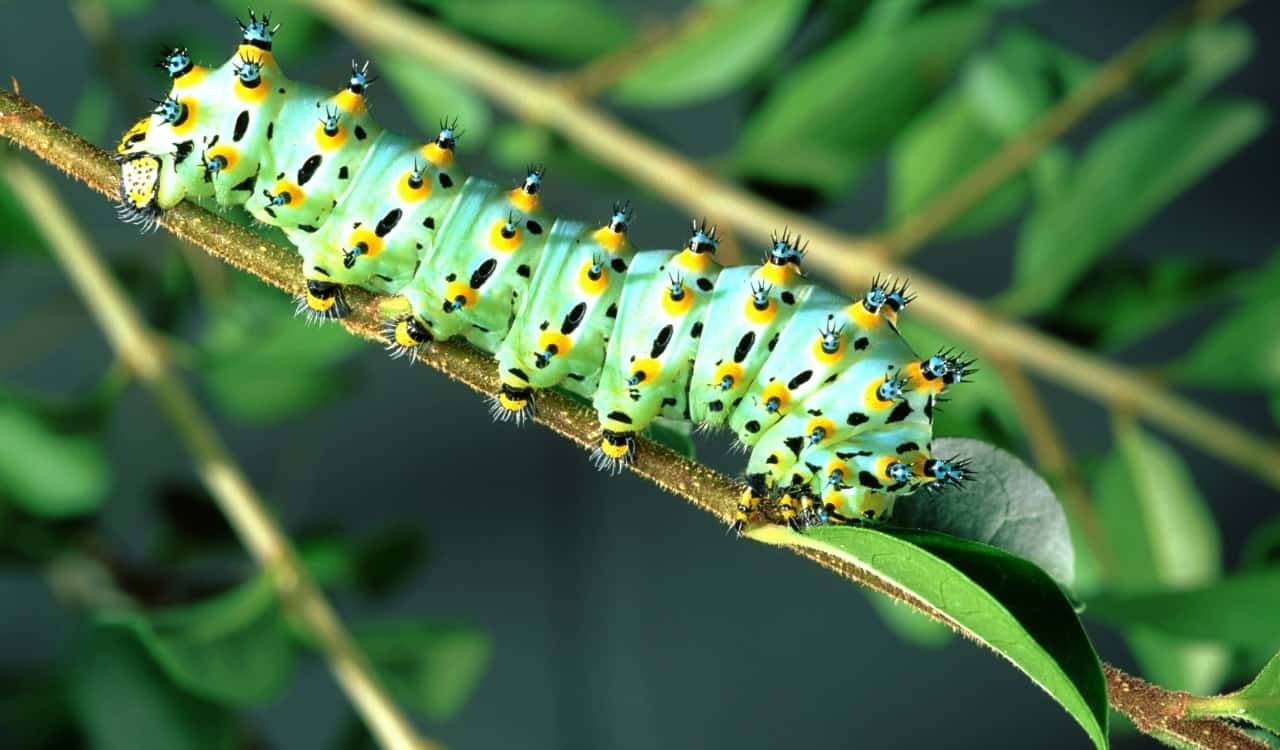
Calleta Silkmoth Caterpillar
- Regions Found: Southern United States, Upper Mexico
- Scientific Order: Lepidoptera
Calleta Silkmoth Caterpillars are pretty awesome. Of course, this caterpillar eventually becomes a silkmoth. The weird part of things is that they actually don’t look like what they will become. The caterpillar is typically bright to dark green, with spiky spots all over the upper section of the body. Sometimes brownish-yellow and black too. Pro-Tip, we’d recommend avoiding them at all costs.
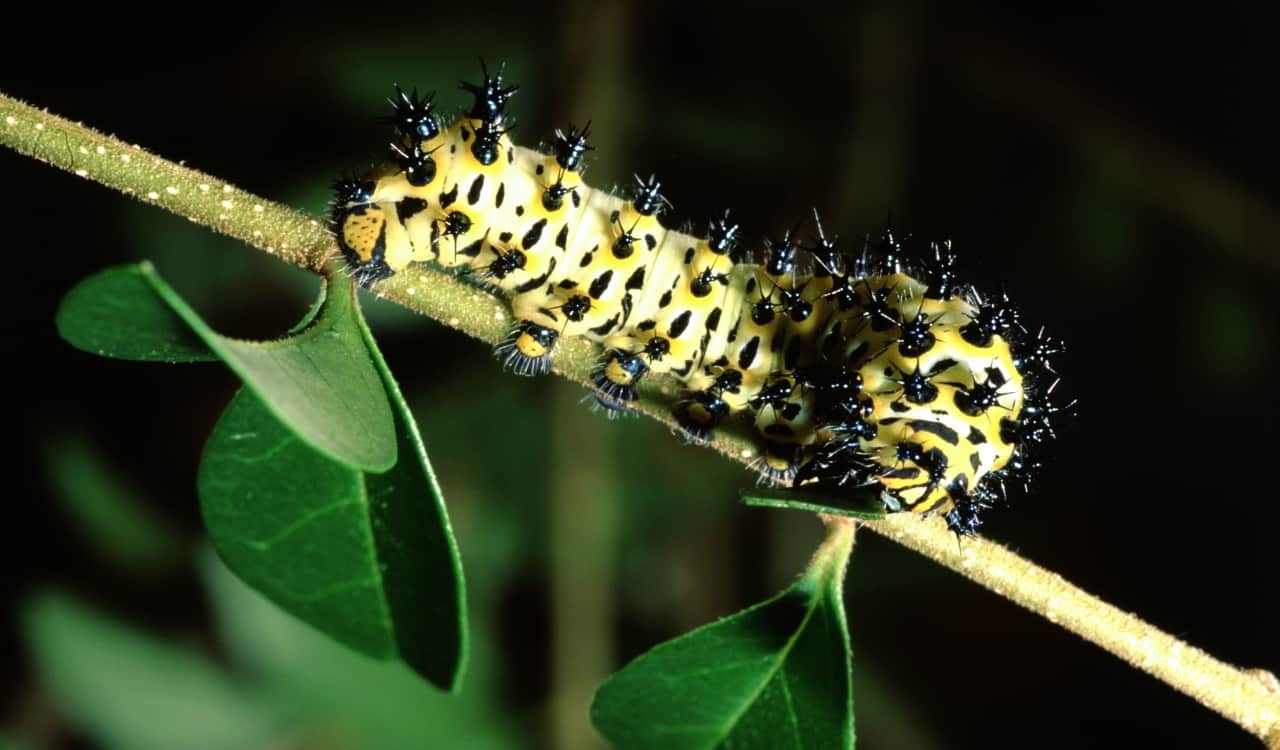
The barbs on the body happen to be poisonous and will break off into potential predators that come in contact with them. Due to the fact that they can be tough to eat and are relatively poisonous, this caterpillar seldom worries about predators. The real sick part, and a major thing that makes them one of the creepiest insects on Earth, is what happens when they turn into a moth. They literally ball up into a cacoon and melt inside, removing all their color upon moth time.
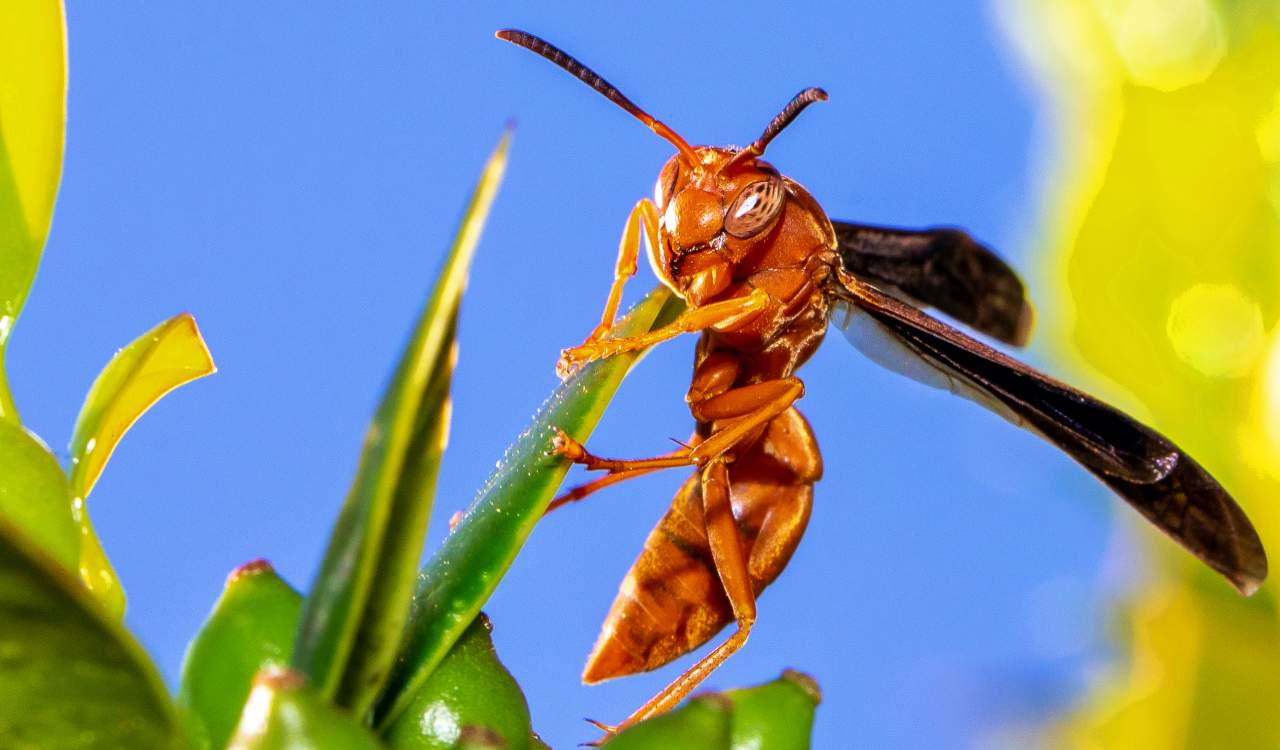
Red Paper Wasp
- Regions Found: Worldwide
- Scientific Order: Hymenoptera
The Red Paper Wasp is not one to mess with. They can be found all over the world. Each territory will present a different look for them. Yet among most in the species line, males will have black or brown markings. On top of this, they have larger hooked antennas, and sometimes the stinger will be larger for them.
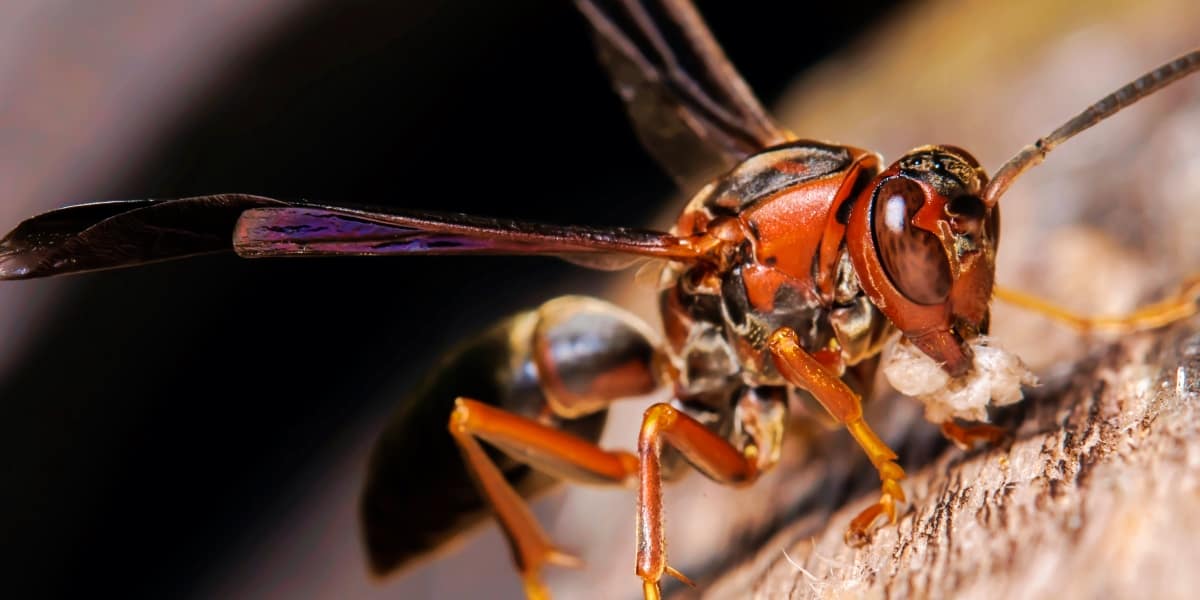
Stingers traditionally do not pop off when they sting humans or other animals. Rather, they are made for precision. A Red Paper Wasp simply stings and moves. Yet they will sting multiple times if they feel threatened. This species is not known for being aggressive though. As for the sting, it is said to be quite painful. Most develop swelling at the spot of the sting. However, some people even claim to have a full-body itch afterward too.
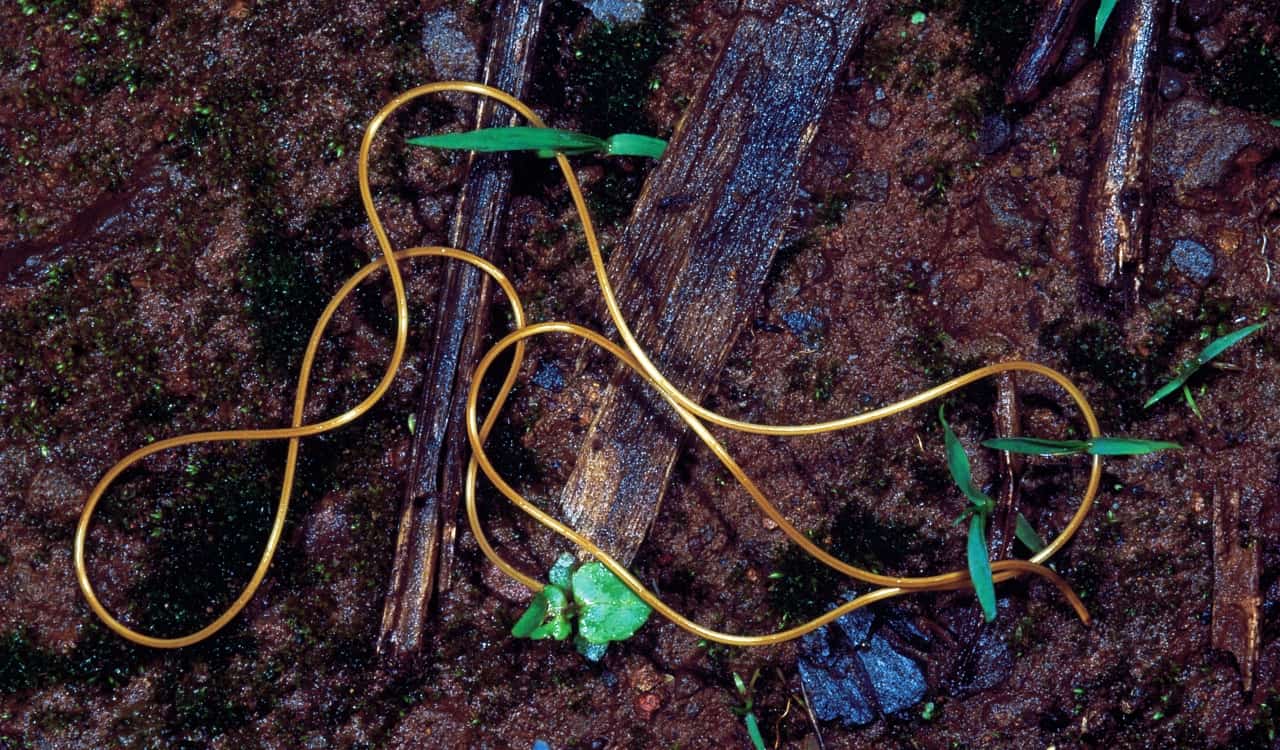
Horsehair Worm
- Regions Found: Worldwide
- Scientific Order: Ecdysozoa
Some might claim we’re cheating by having a worm on the list. Yet you should be aware that this specific worm acts as a parasite and exclusively invades insects. Therefore, an insect could very well have its body invaded and taken over by the Horsehair Worm. What ends up happening is that larvae tend to be in a marine environment where another insect might pop by. They will then invade, say, a grasshopper that will then become its host. From there, the worm acts sort of like an infection.
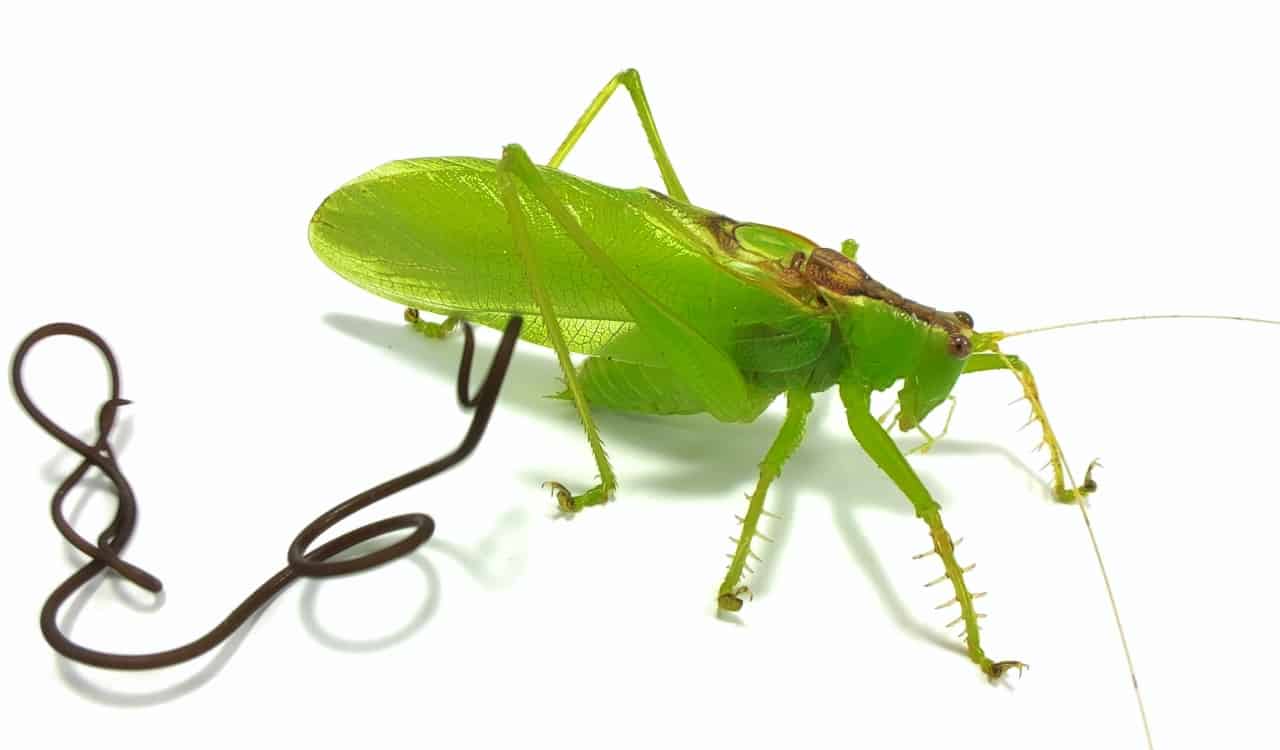
The worm actually infects the brain and literally controls its insect host. It will cause its host to seek out a water source and drown itself, which then allows the worm to yet again return to the water. This is how this species is capable of moving from place to place. If that did not make it worthy of a creepiest insects list, you should also know that it can survive predator attacks. If their host is attacked, they can wiggle out before being consumed by the predator. Leaving their host to die.
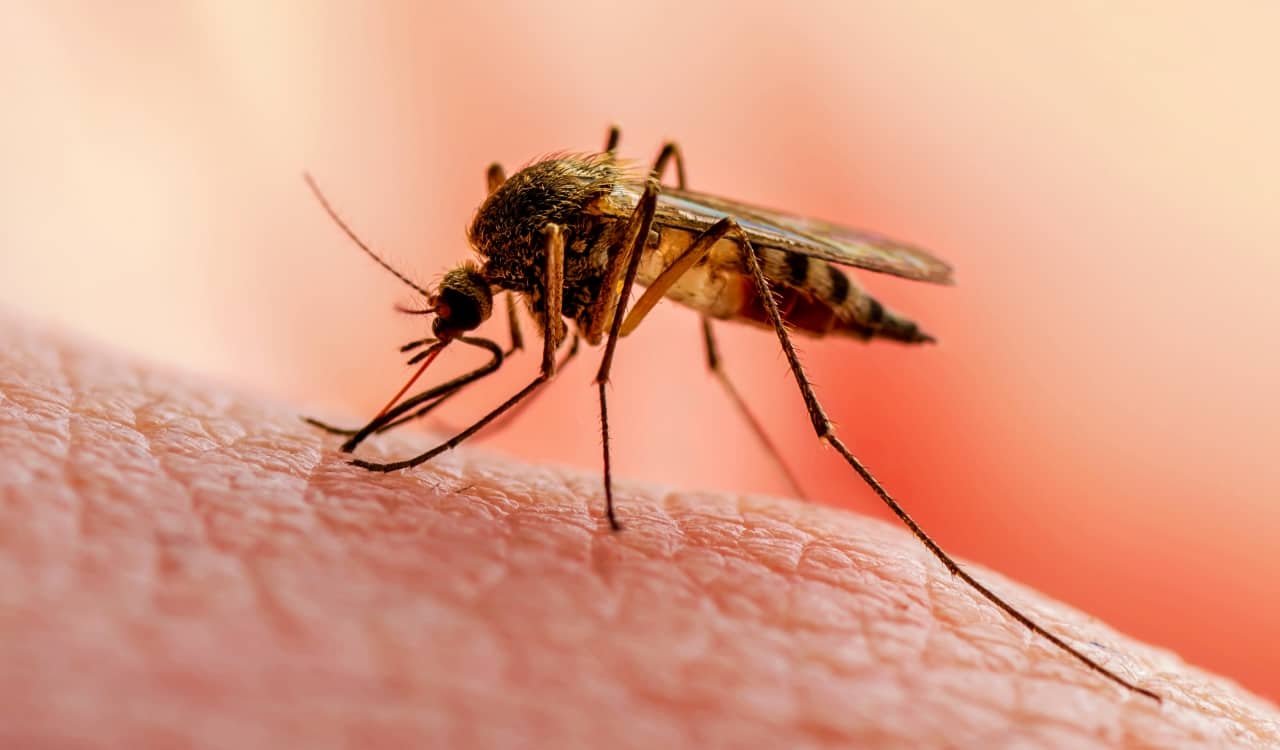
Mosquitos
- Regions Found: Worldwide (except Antarctica)
- Scientific Order: Diptera
Among all of the creepiest insects of the world on this list, Mosquitos are responsible for the most human deaths. In fact, they have killed more in just one year than every single one of the others combined. Most people experience mosquitos in hot or humid environments. This makes them a common thing to see in the Americas and Africa. What makes them so dangerous is their ability to contract illness from a host they bite into. They will then transmit that into the next person(s) they bite.
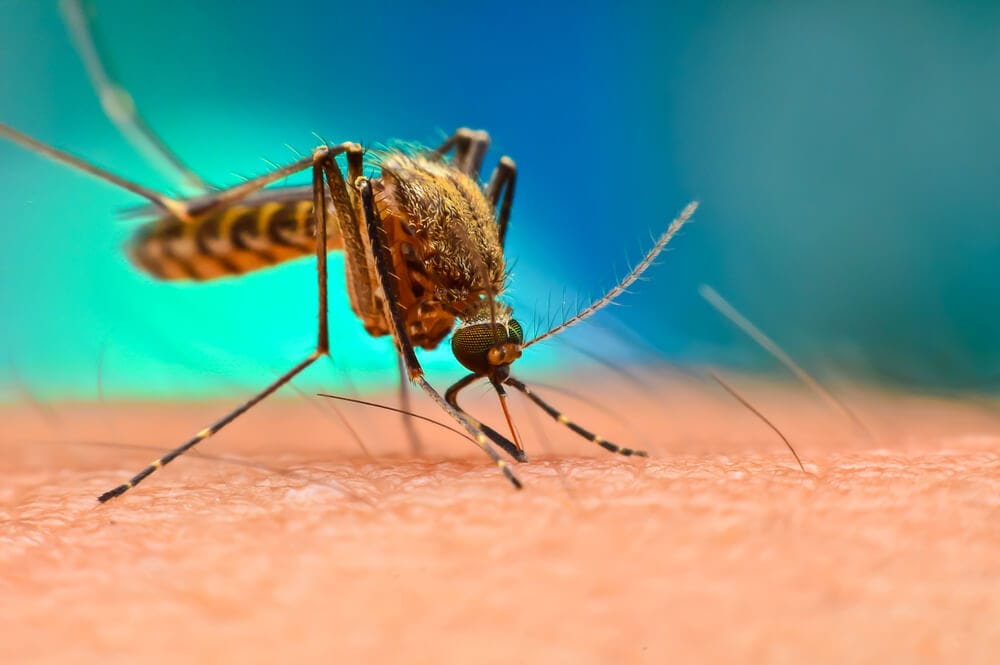
The saliva from the insect is what actually causes the itchy rash they leave behind. For some, this is all there is to worry about. However, since many mosquitos carry illnesses, they have passed around diseases such as Malaria, Yellow Fever, Dengue Fever, West Nile, and the Zika Virus. In fact, it has been estimated they have been responsible for around 5% of all human deaths in history.
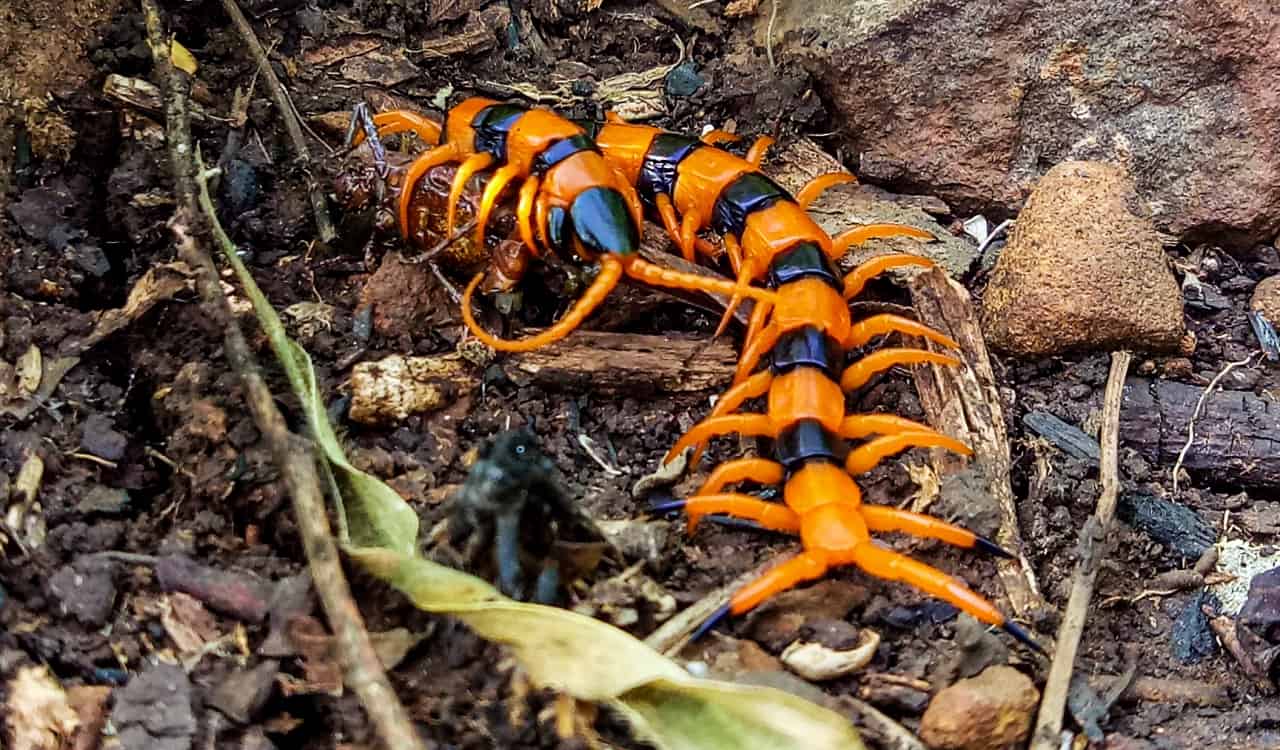
Scolopendra Subspinipes
- Regions Found: China, Australia, Malaysia, Indonesia, Caribbean Islands, Central & South America
- Scientific Order: Scolopendromorpha
You might wonder why we used the “scientific” name of the species, Scolopendra Subspinipes. We felt it was easier than listing one of the dozen nicknames it has based on the regions it might be located in. They are mostly found in subtropical areas around the world. They are considered among the apex predators of insects, taking down any animal it can overpower.
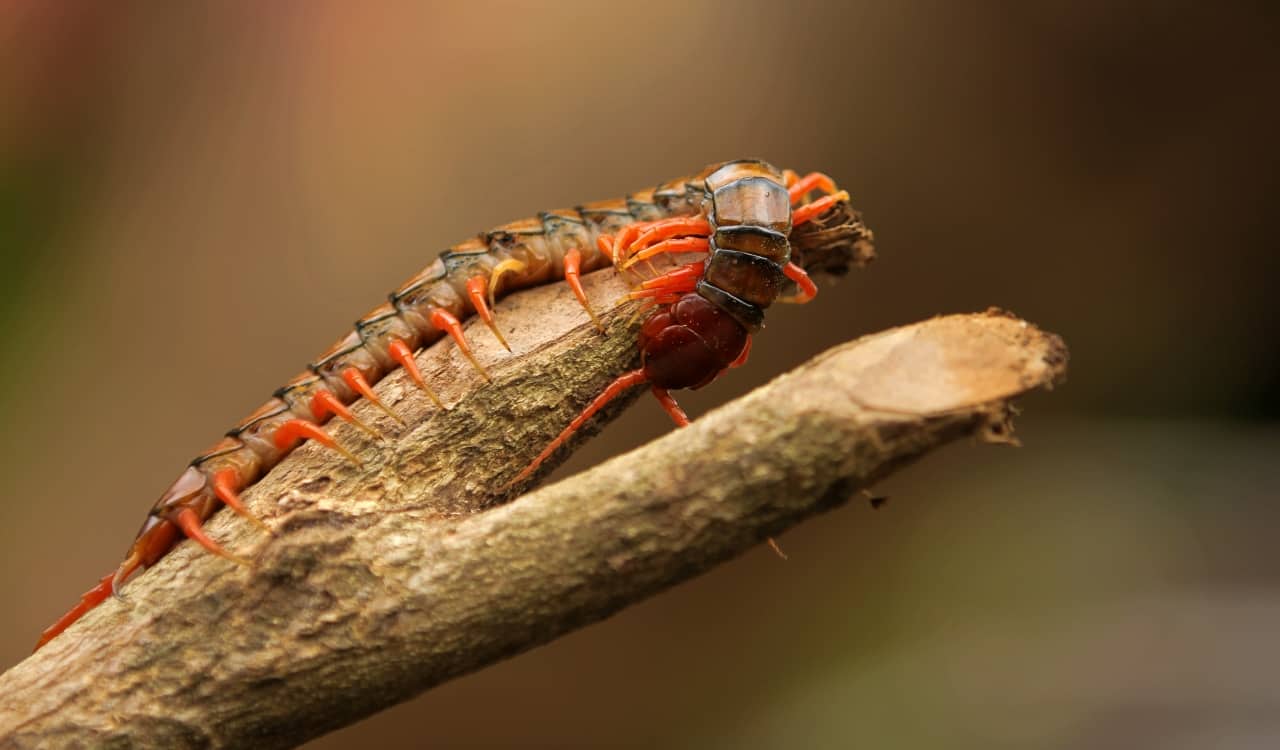
This species has also killed at least one human due to its venom, but it was a child. In large doses, it could kill the average adult though. In fact, their venom is often why they are successful hunters. The species operates like a snake, wrapping around an animal and striking with venom. This allows it to kill mice, lizards, and other creatures that would normally eat IT for a meal.
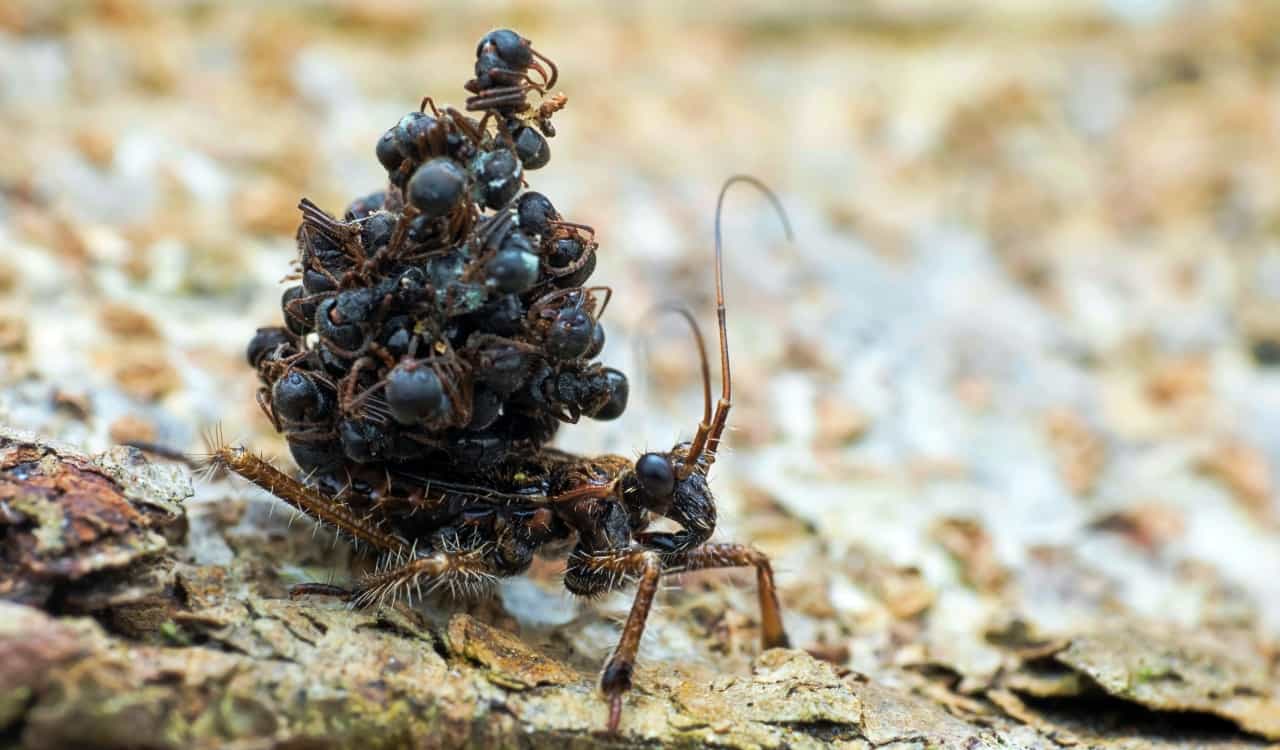
Assassin Bug
- Regions Found: North & South America
- Scientific Order: Hemiptera
If you want to find a genius insect that’s also partly a sociopath, we give you the Assassin Bug. They are truly one of the creepiest insects you’ll ever come across. What makes them “assassins?” First, they are one of the few insects that are true ambush predators. They have been known to pop up and snatch live bees out of the air mid-flight before. However, they tend to mostly stick to ground-based prey.
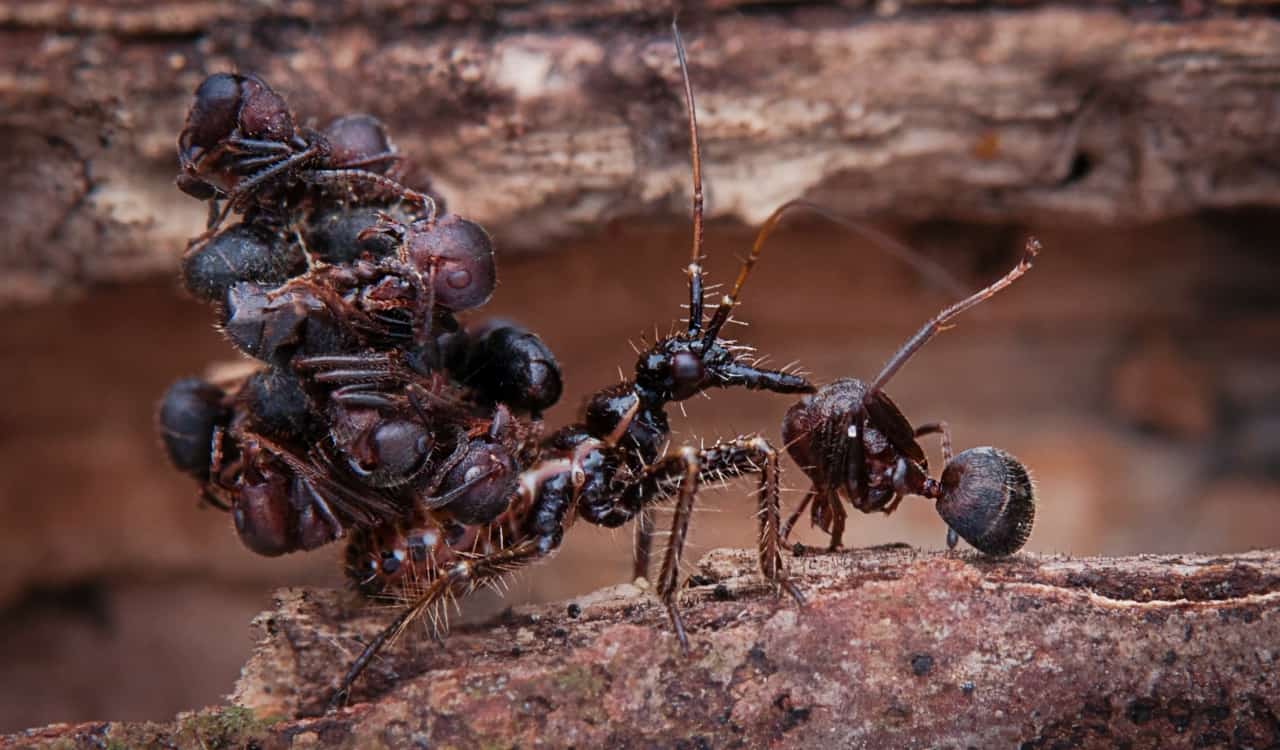
There are both predatory and nonpredatory versions of their species. The nonpredatory are blood-sucking ectoparasites, like kissing bugs. Meanwhile, the predator version will stack dead ants on their back. Since many of its own predators hate messing with ants due to their large colonies, they’ll steer clear. Assassin Bugs will have mounds up to 2 or 3 inches of dead ants in goop on their back at a time. It’s incredibly creepy for sure.
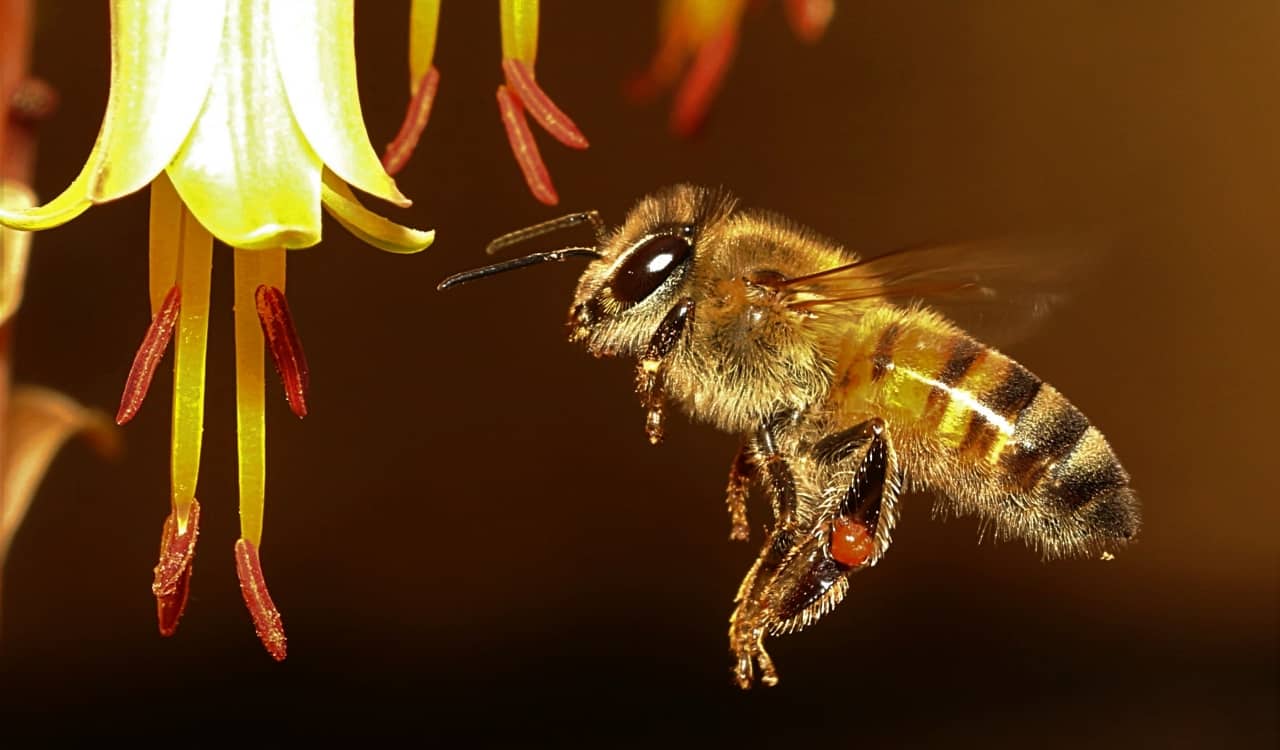
Africanized Bee (Killer Bees)
- Regions Found: North & South America
- Scientific Order: Hymenoptera
Did you know that Killer Bees are actually a hybrid creation formed by human beings? Seriously. They are made from the Western Honey Bee and East African Lowland Honey Bee. We first introduced the East African bee to Brazil in 1956, mostly to increase honey production. However, they were confined in a quarantined area where they’d mate amongst each other and create hybrid bees that produced more honey. Yet in 1957, 26 swarms escaped the quarantine and spread around rapidly. This started in South and Central America.
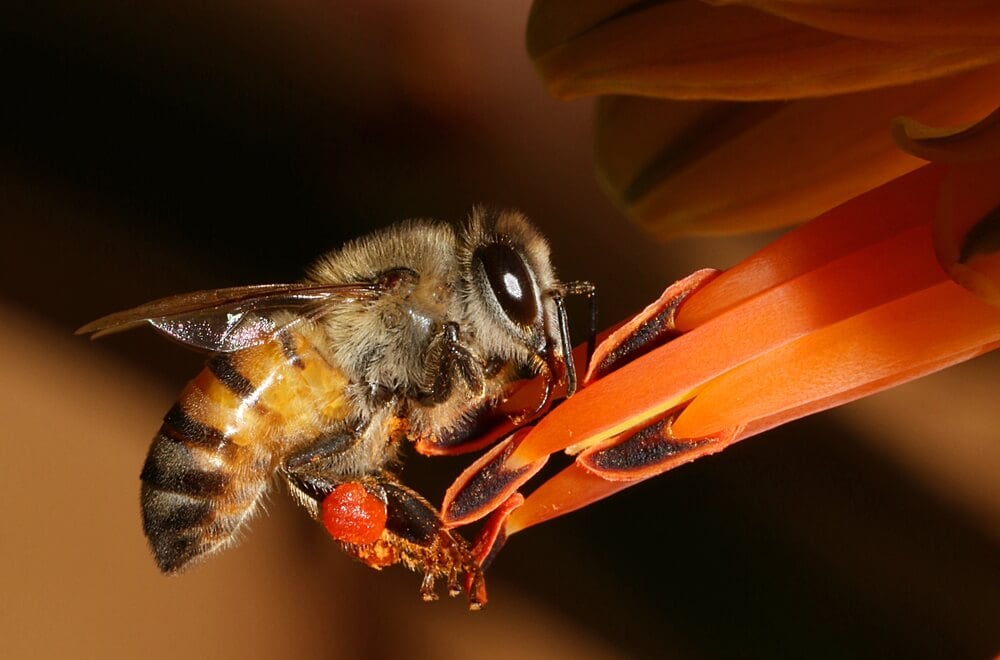
By 1990, they were in the U.S. and have become a huge part of the southern section of the States ever since. Killer Bees are very defensive and aggressive compared to other honey bees and react much faster to potential threats. In fact, they have been known to chase people up to 400 meters and have stung humans at around 10 times that of other bees. In spite of the bees losing their stingers and dying shortly after a sting, they simply do not care. The species is cult-like, where it quite literally has a “hive-mind.”
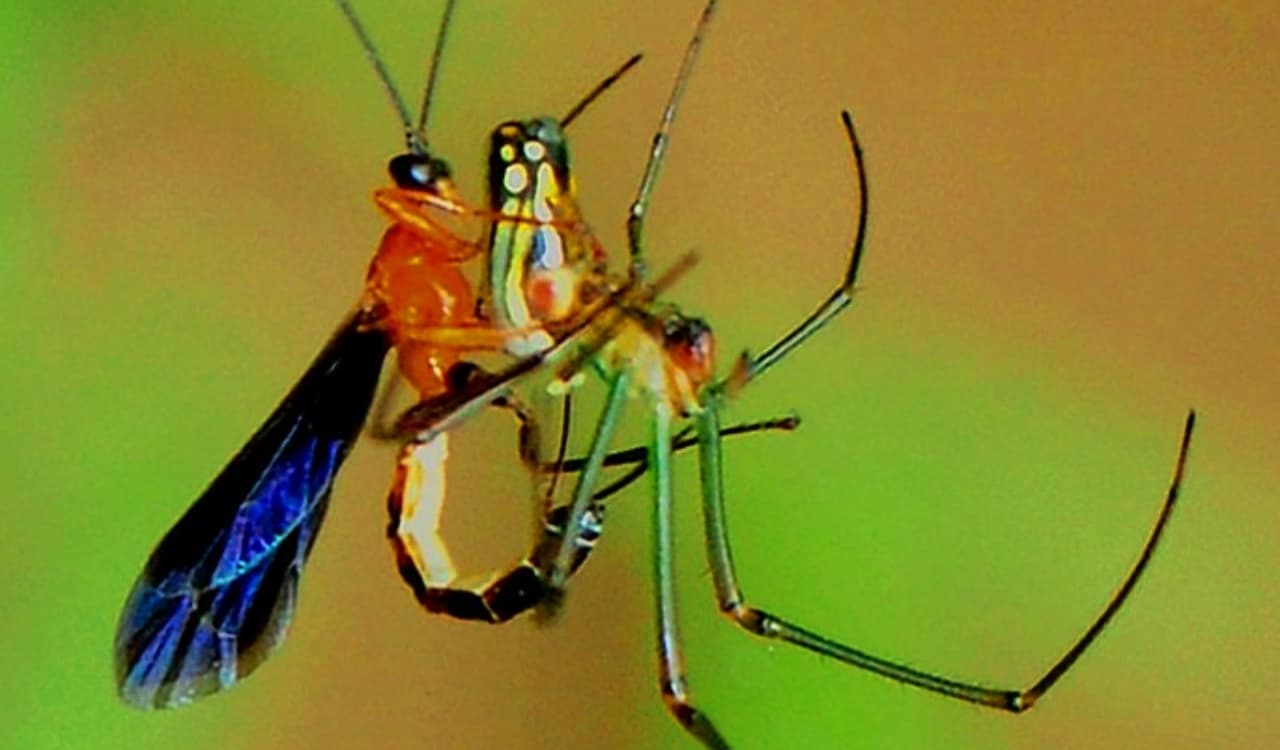
Hymenoepimecis Argyraphaga Wasp
- Regions Found: Costa Rica
- Scientific Order: Hymenoptera
The Hymenoepimecis argyraphaga happens to be a parasitic wasp, found in Costa Rica. After the female wasp mates with a male, they actually find a host to lay their eggs inside of. This tends to be the Leucauge argyra spider. The species is common where the wasp is native. Well, the main idea behind this is the aid the spider offers. Once they immobilize a spider using its venom from its stinger, they only have up to 10 minutes before paralysis wears off.
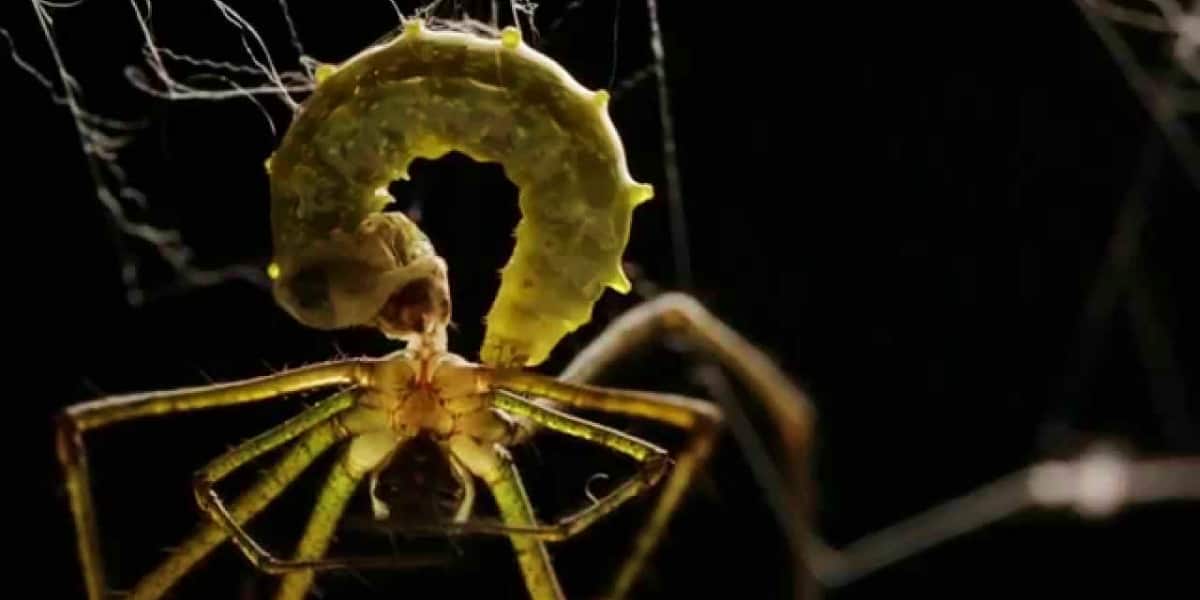
In that time, they will enter the spider’s body to dig around and see if they have larvae inside. If any are found, they will remove them and place their own eggs in. The spider goes about its normal life. But once the eggs are about to hatch, the larva release a chemical that makes the spider form a special web cocoon for the larva. The spider then just sits there, sometimes adding more webbing. It even does this if the larva is removed already. Once hatched, the spider is killed by the new wasps.
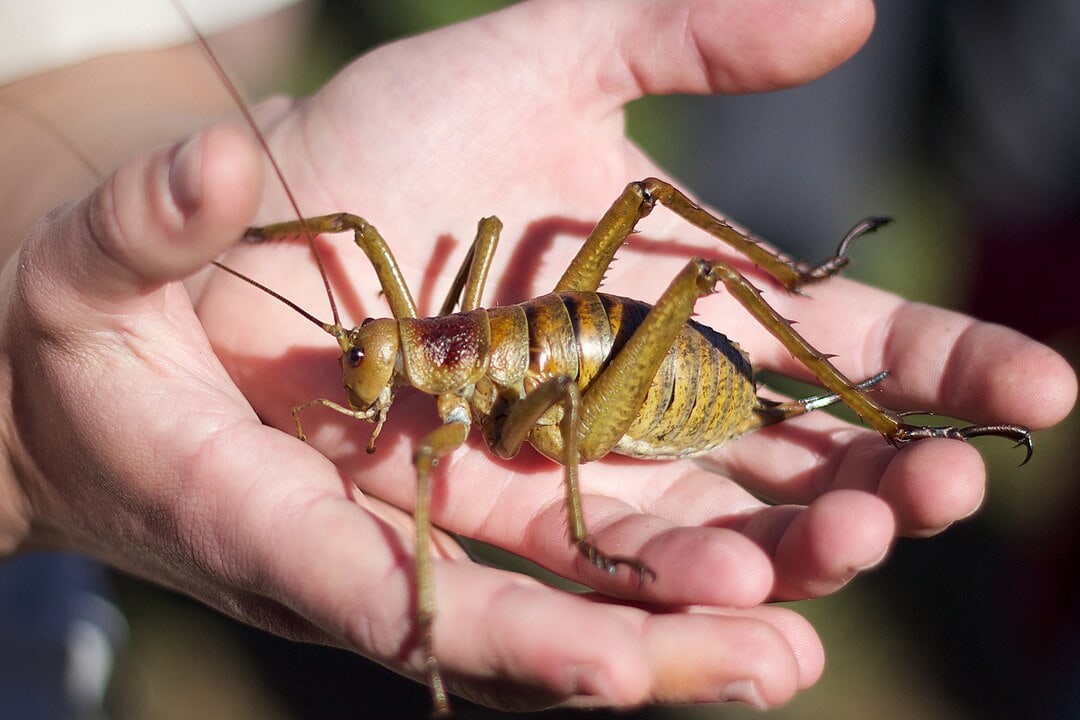
Giant Weta
- Regions Found: New Zealand
- Scientific Order: Orthoptera
The Giant Weta is creepy but at risk of extinction. Due to the introduction of specific mammals to New Zealand, most of the wild Giant Weta have been killed. Those living are often in captivity or make their home in offshore islands belonging to NZ. When handled by people, there is often a good visual of how they tend to take up over an entire hand’s worth of space.

That is obviously quite big, and possibly enough to land them on the creepiest insects list alone. Basically, this is an incredibly large grasshopper or cricket, as it’s part of the same Orthoptera family the latter two species are part of. Of course, those little guys are quite creepy on their own. Now imagine a random cricket being far larger. That made the Giant Weta a go-to food for new mammals introduced to NZ. While their size was an asset for years, it ironically led to the species decline.
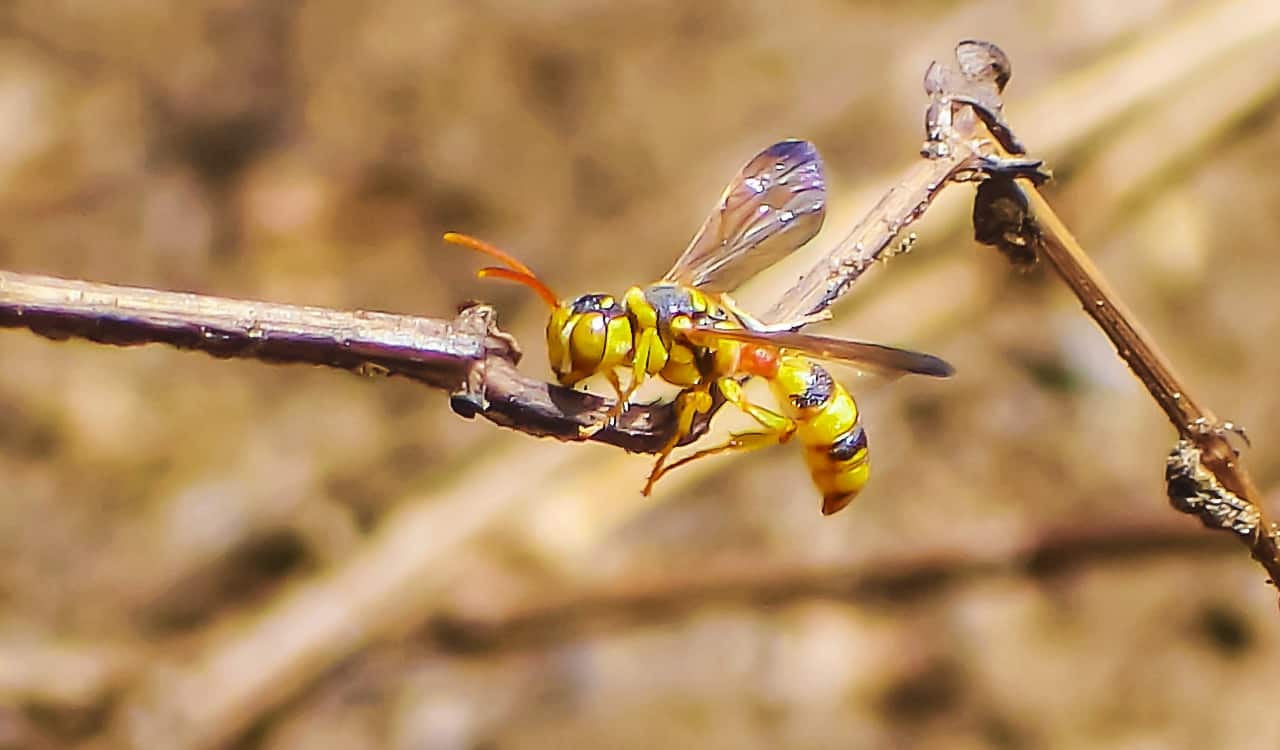
Executioner Wasp
- Regions Found: North & South America
- Scientific Order: Hymenoptera
The Executioner Wasp has been growing in popularity thanks to animal expert Coyote Peterson. During his mission to be stung by those with the most painful stings, he literally had the Executioner sting him. It put him in serious pain, pushing him to declare at the time that it was the worst he ever experienced. It caused tissue necrosis in his arm, as well as severe swelling that required a hospital visit. When swelling finally went down, he developed a small hole in his arm from the rotted skin.
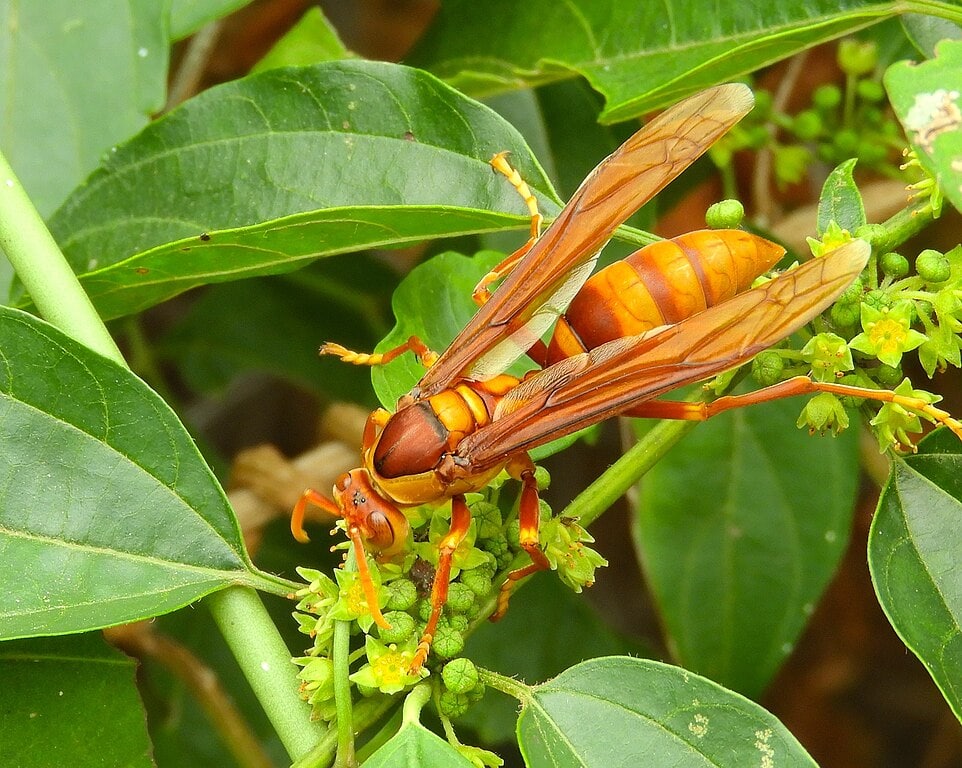
That said, the venom these creatures have is incredibly effective. Of course, none of these wasps have enough in one sting to kill the average adult human. Thankfully, the species is also not very aggressive. However, if a person were to be stung by several, that amount of venom exposure could very well kill someone. When you talk about the creepiest insects in terms of look, the Executioner certainly has that. When you factor in what it can do to you, holy crap!
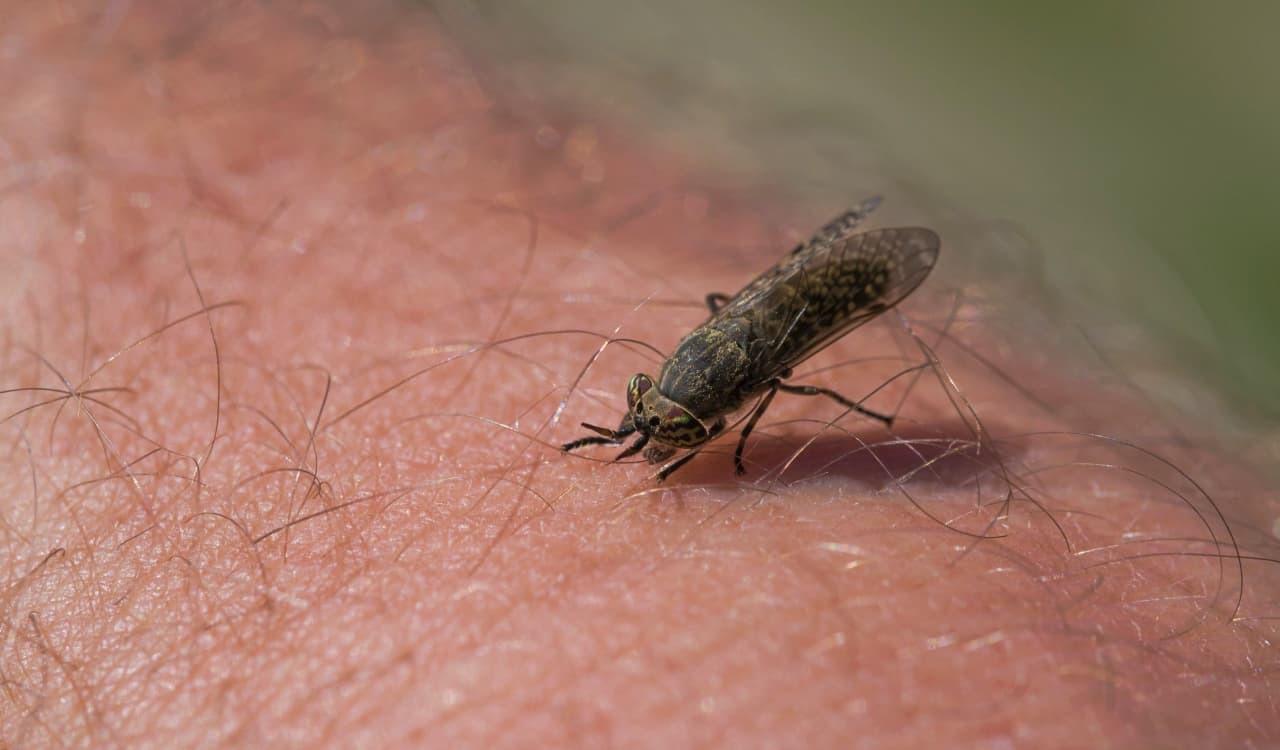
Human Bot Fly
- Regions Found: North & South America
- Scientific Order: Diptera
It’s rare that we gag discussing creatures. However, we might do so when describing the Human Bot Fly. These Bot Flies are known for being parasitic, where they take over the bodies of different species to lay their larvae into. That can include ticks, mosquitos, as well as cattle and deer. What makes the Human Bot Fly stand out in the species is, well, us.
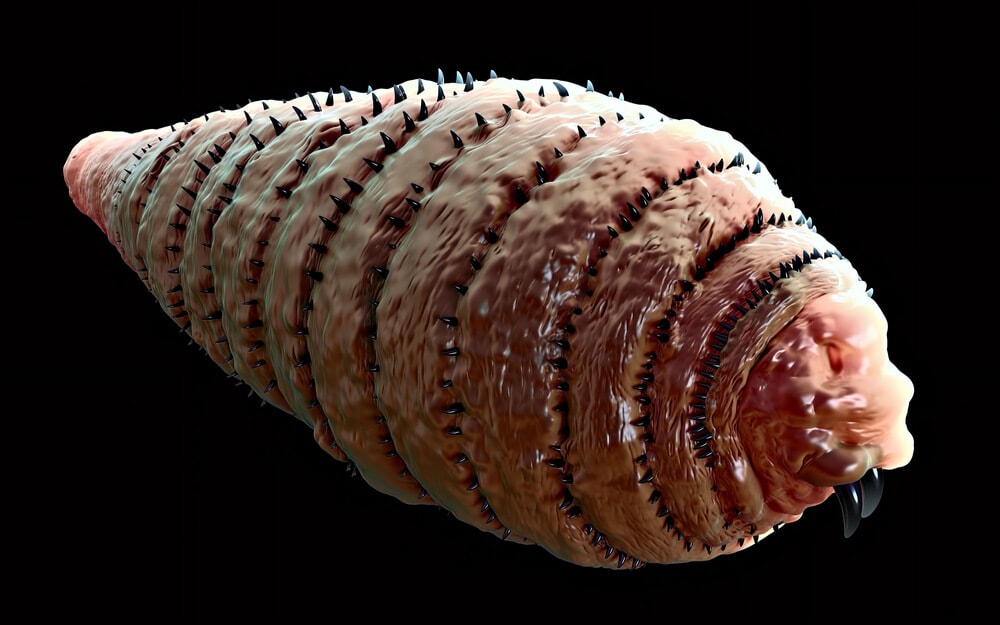
“Human” Botflies lay eggs in our skin. Most of the time, we know that something is there. If infection sets in, it could kill the larva, so the spot has to be perfect in our skin. Females generally tend to drop their eggs in open holes, such as an ear, inside the mouth, or an open cut/wound. If left alone, they’ll slowly grow under the skin for up to 8 weeks until they are ready to hatch out. That causes them to then burst out or eat their way out of human skin. Talk about creepiest insects, eh?

Maricopa Harvester Ant
- Regions Found: United States & Mexico
- Scientific Order: Hymenoptera
The Maricopa Harvester Ant is one to fear for humans. They possess venom that is roughly 10 times stronger than what you might find in your average bee. Of course, this is still only 0.12 mg/kg when measuring its LD50 value in mice. This roughly means 12 stings could kill a 2kg mouse. That might take a bit more to kill your average human. Officially speaking, the Maricopa Harvester Ant is the most toxic insect on the planet.
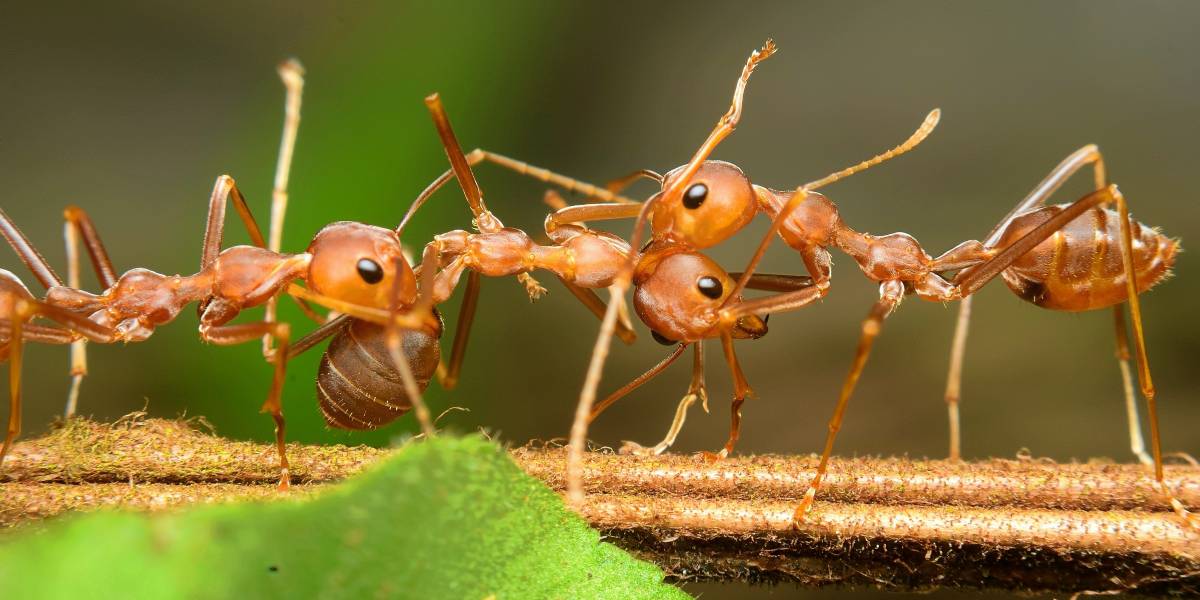
In humans, the pain from their bite is intense and lasts around four hours before letting up. One portion of their venom is an alkaloid poison that actually releases a pheromone as an alarm signal. This version of chemical signaling will trigger other Maricopas nearby to come by to help. That can then lead to several coming by and all stinging at the same time. Some humans are allergic to several things in their venom, which can cause possible anaphylaxis.
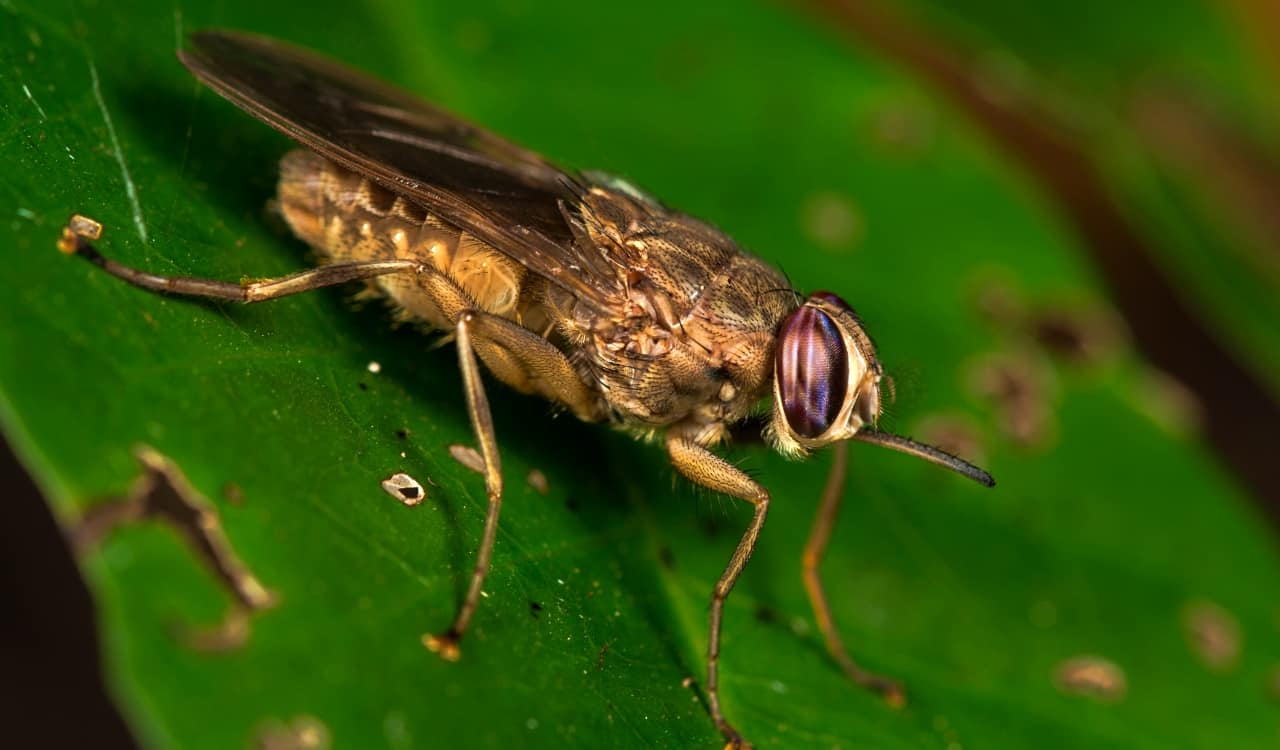
Tsetse Fly
- Regions Found: Sub-Saharan Africa
- Scientific Order: Diptera
The Tsetse Fly mostly inhabits tropical African regions. They are known as large biting flies that can also spread disease. Yet the big thing about them is that they are literally parasites. They are actually obligate parasites, which are parasites that must exploit a host to complete its life-cycle. In fact, they cannot even reproduce if they cannot find a proper host. They live by feeding off of the blood and even vertebrae of their animal host.
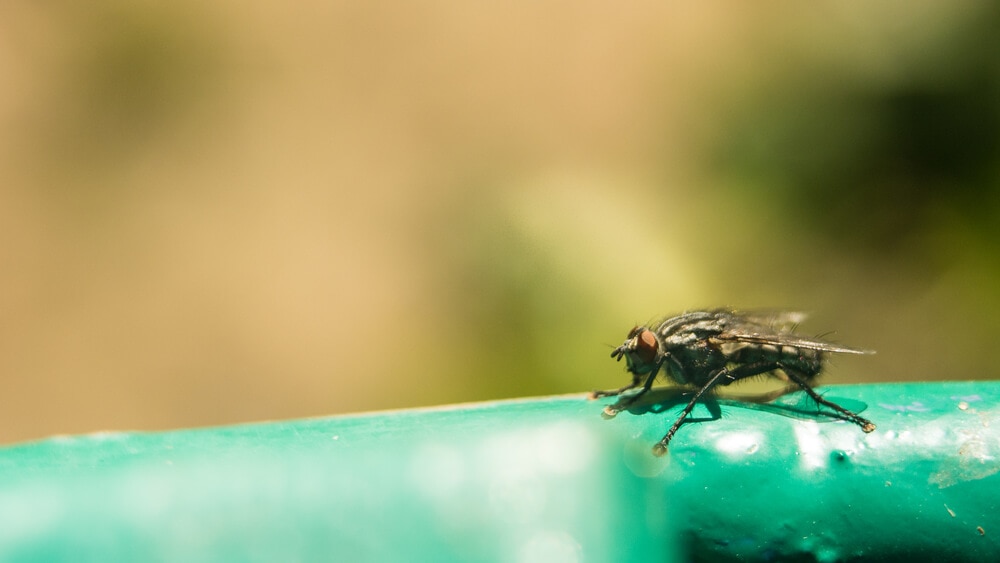
They possess and spread trypanosome parasites, being that they are the biological vectors for them. In humans, it can cause human sleeping sickness. In animals, it can cause animal trypanosomiasis. Both are essentially vertebrae infections. Plus, they can move around from host to host if they need to. This can allow the Tsetse to live a long time, enough to produce up to 31 broods of its own in one lifetime!
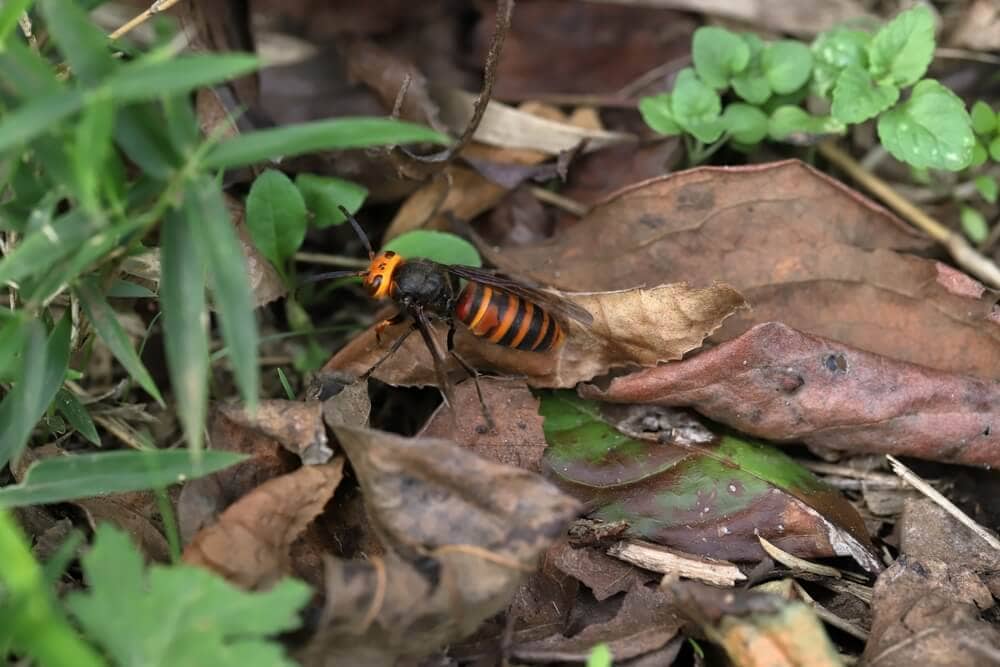
Japanese Giant Hornet
- Regions Found: East, South, & Mainland Southeast Asia (as well as Far-East Russia & Pacific Northwest U.S.)
- Scientific Order: Hymenoptera
The Japanese Giant Hornet gets its name honestly. They are mostly native to Japan and some other areas around Asia. They are also quite large and are a species of hornet. The big problem with the species is that some have slowly made their way into other sectors of the world, including mainland America. This is an issue because the species is actually an ecological disrupter. They have been known to have epic battles with beehives. Sometimes, just one Hornet can surprise attack a hive and kill dozens before the hive can respond.
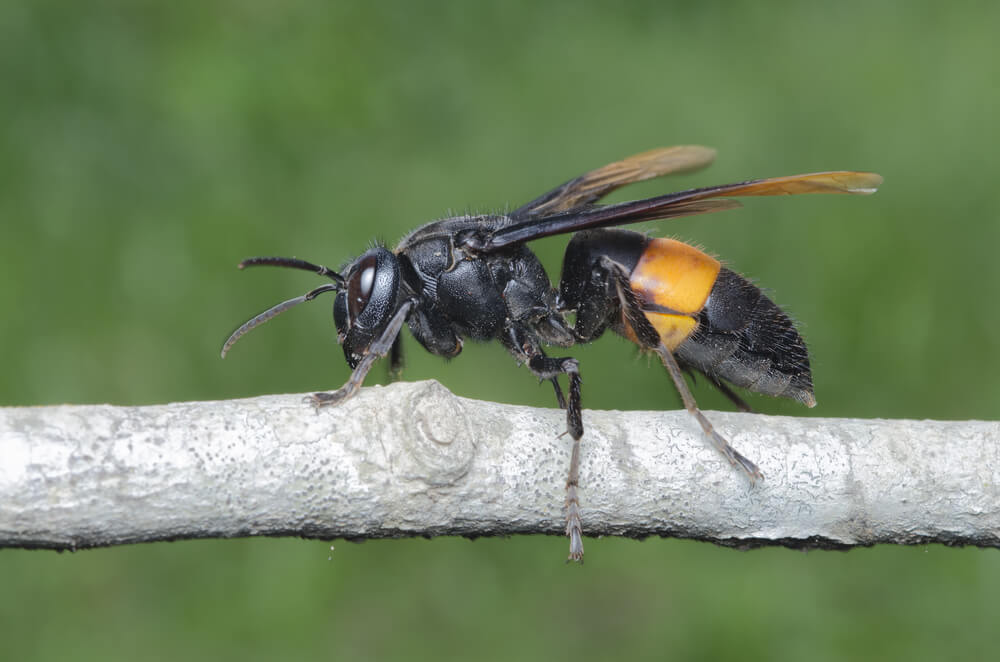
The hornet is about 45 millimeters in length with a wingspan of 3 inches. Their stinger is incredibly large at 6 mm and injects a major amount of venom. For humans, this can cause severe pain that lasts. When animal expert Coyote Peterson was stung, it hit him with a wave of dizziness immediately. In just 20 minutes, most of his arm was swollen below his elbow. A lump developed at the site of the sting that was roughly 2 to 3 inches in height. In the end, his ENTIRE arm was swollen at double its normal size. Swelling and pain went down after a few days. The venom contains a neurotoxin, which causes most of this.
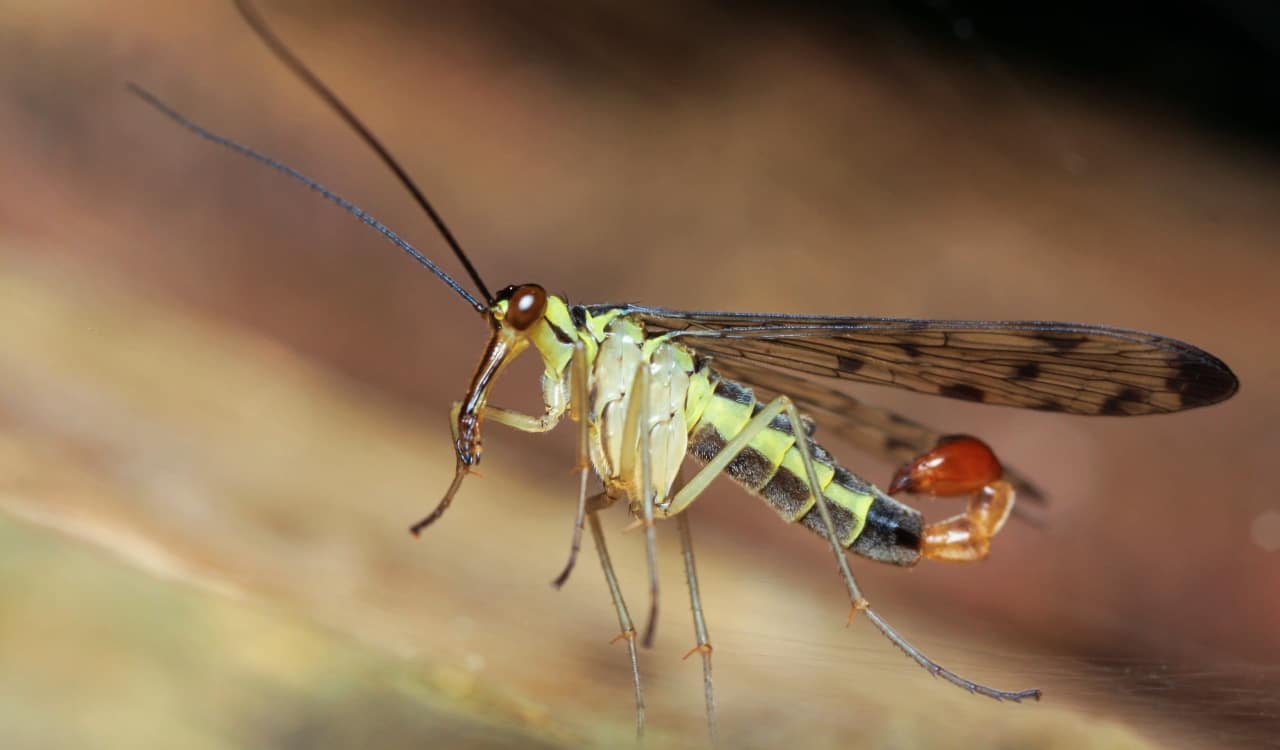
Scorpionfly
- Regions Found: Worldwide (other than the Arctic)
- Scientific Order: Mecoptera
When you think of a Scorpionfly, what do you imagine in your head? A fly that looks like a scorpion? That is exactly what you get. Males are normally more aggressive than females and will raise their tails as if to strike using it. This is where the fly gets its name. However, they cannot sting with their tails or really at all. The real connection they have to humans is honestly their presence upon our death.
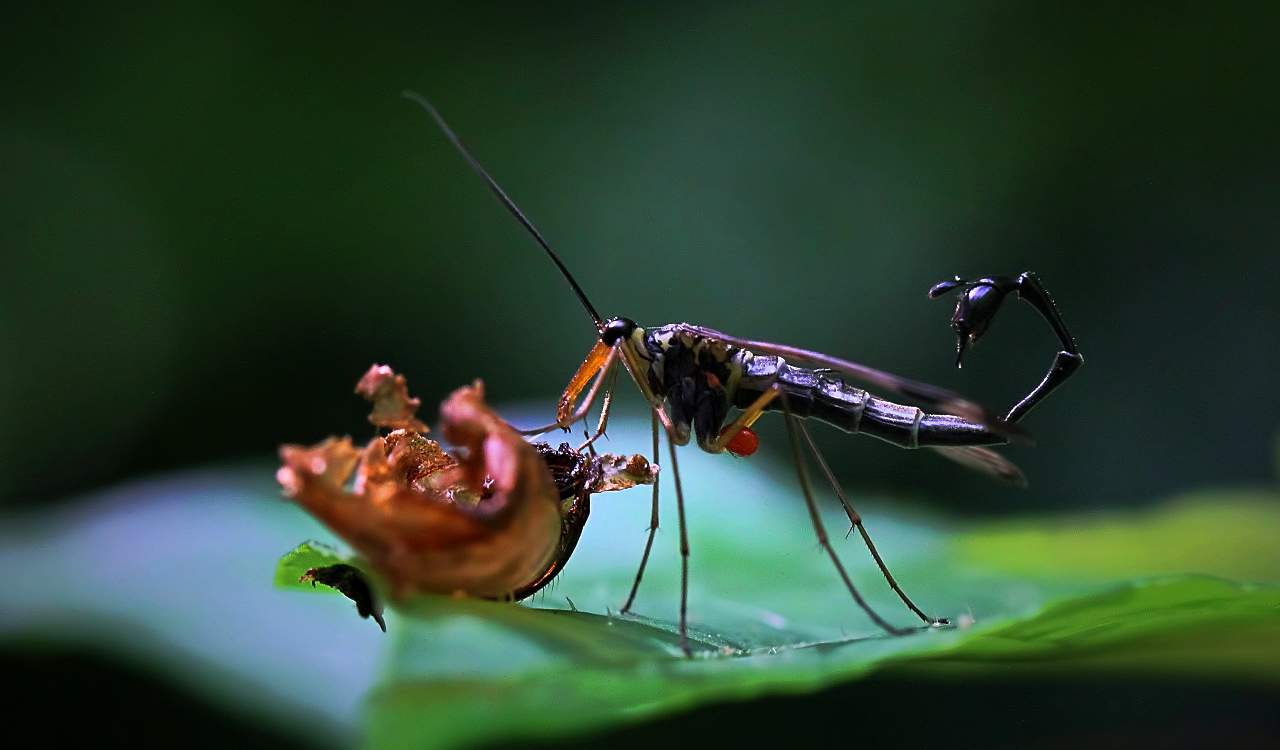
This is where they join our creepiest insects list. Scorpionflies are commonly found around human corpses that they will feed upon. However, these corpses must be fresh for them to do so. Thus, if you spot them at a corpse, it has likely been there for less than a day or two. They will actually feed on the human, both inside and out, for about a day. The species does not exclusively feed on dead humans, however. More often than not, they feed on other dead animals and decaying vegetation.
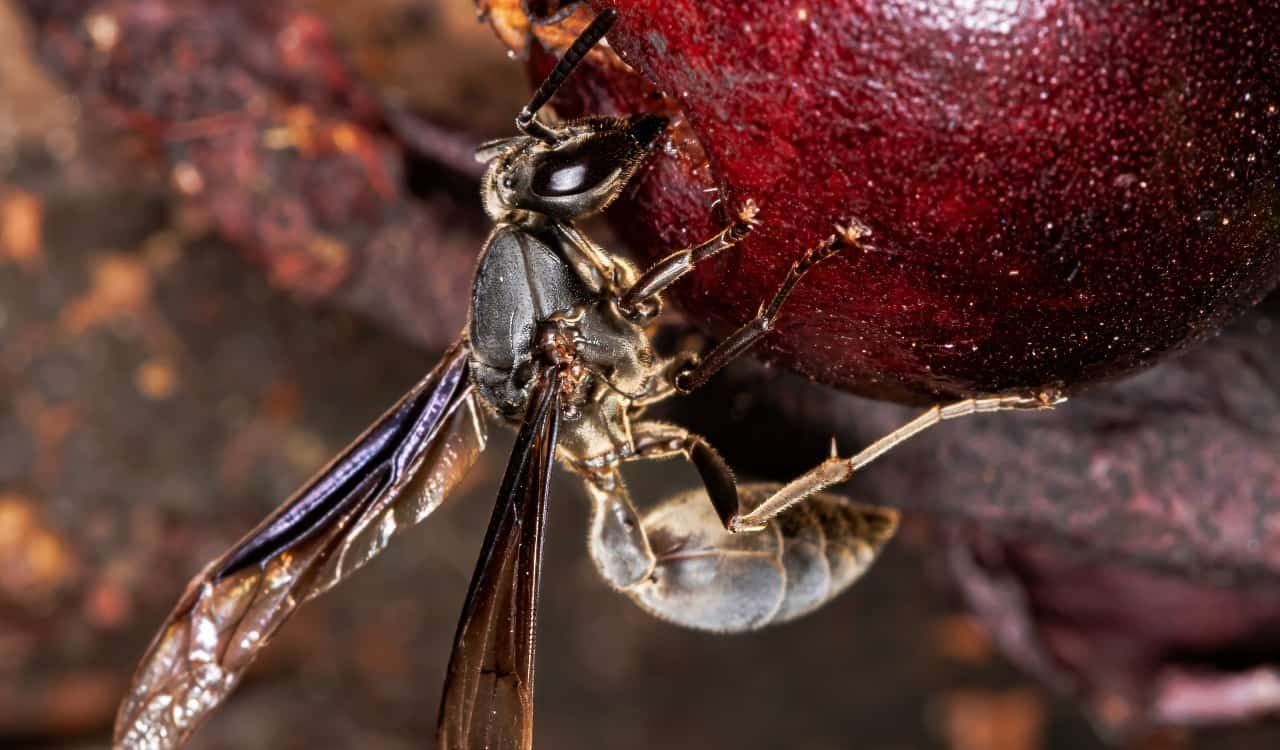
Warrior Wasp
- Regions Found: South America
- Scientific Order: Hymenoptera
The Warrior Wasp species is known for its aggressive behavior while guarding its nest. Most wasps can sting a person or animal several times and won’t experience any issues. Yet Warrior Wasps actually have a barbed stinger, resulting in it sticking into the skin of most humans and animals. That will then kill the Wasp. They get their “warrior” portion of their name partly due to this. The species might attack in a kamikaze-like fashion, where it’ll aggressively shoot off to sting a threat.
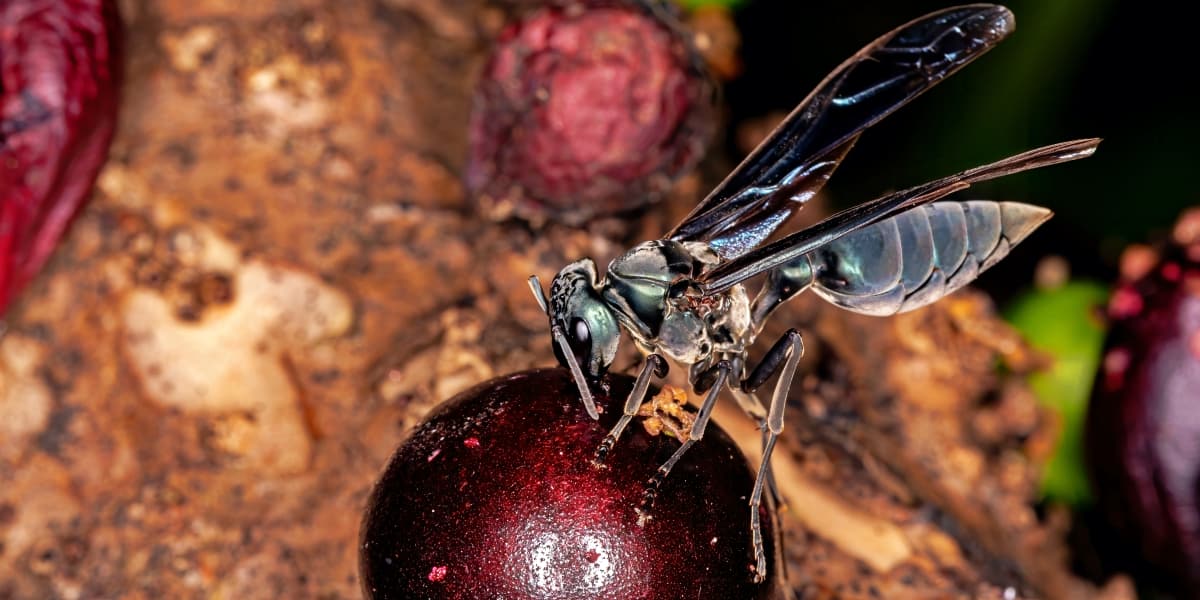
That makes them some of the creepiest insects to us. One of the few wasps that die when it stings and they go about things in a suicidal fashion. The species tries to deter threats when guards alert others in their hive that a threat is near. That causes them to make a drumming-like sound. If they do sting you, it causes severe pain that can last for several hours. One expert described the sting as “literal torture.”
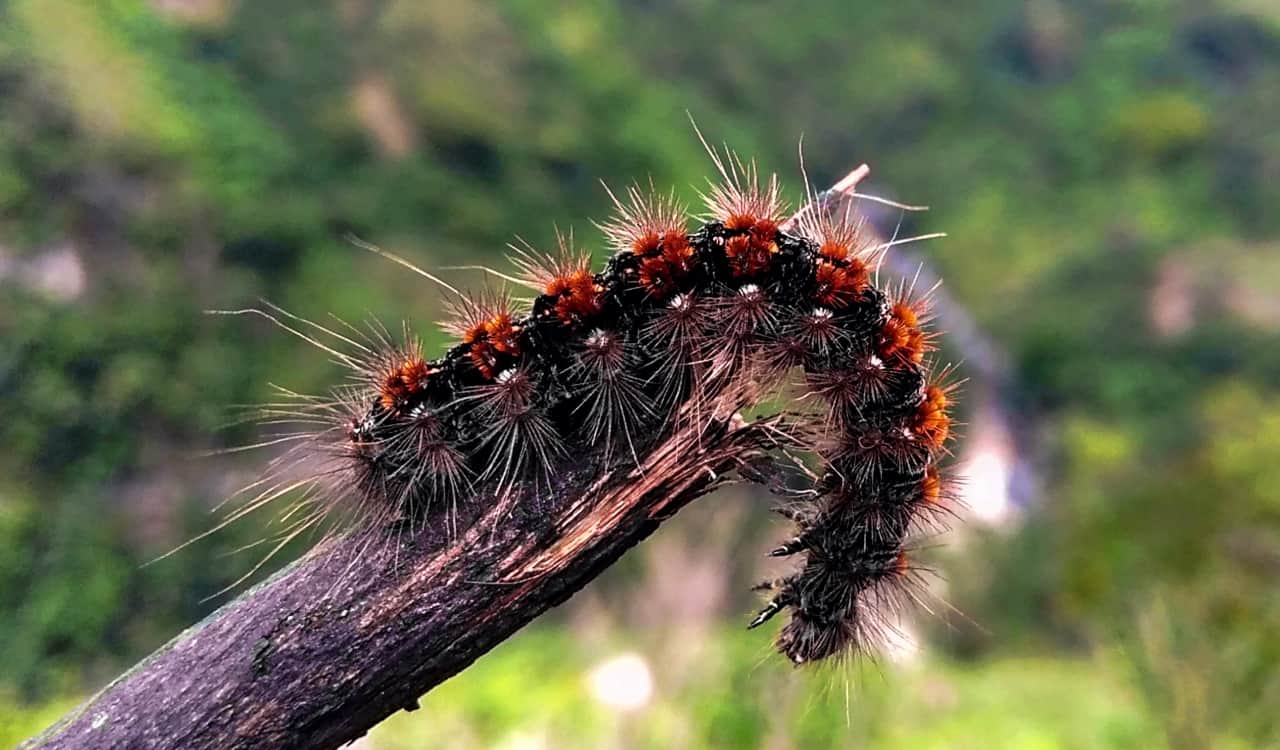
Assassin Caterpillar (Lonomia)
- Regions Found: South America
- Scientific Order: Lepidoptera
At one point, very few people ever heard of the Lonomia Caterpillar. It is mostly found in South America and eventually becomes a pretty moth. What makes it one of the creepiest insects around? Less than a decade ago, many people began dying from interactions with the caterpillar species. Roughly 500 people died in a short time period. When studied further, scientists found the sharp barbs on its body happen to be laced with a very effective, deadly venom.
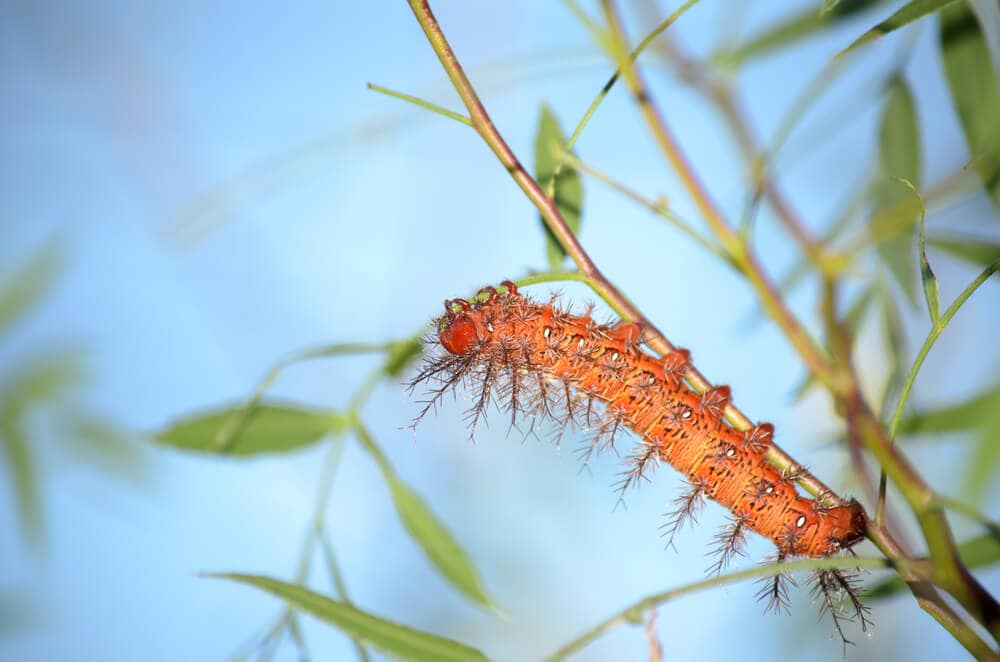
This venom causes “disseminated intravascular coagulation.” Essentially, it causes a person to be unable to clot. Their venom also causes a person to bleed internally. The lack of clotting then causes a person to leak blood from their mouth, nose, ears, pretty much any hole you have. It apparently killed so many because people often stepped on the top of it or leaned on a limb it was on, causing several interactions with its spines. The numerous deaths led to the rise of the “Assassin Caterpillar” nickname.

Bullet Ant
- Regions Found: North & South America
- Scientific Order: Hymenoptera
The Bullet Ant is known for having one of the most painful stings on the planet. They actually have many effective ways to hurt humans. The pinchers from its mouth can latch onto the skin and be quite painful. The species is unique among ants, who would normally bite only. Yet the Bullet Ant happens to have a stinger a lot like wasps. Their sting itself can be painful upon entry, but the true pain happens once its venom reaches the bloodstream.
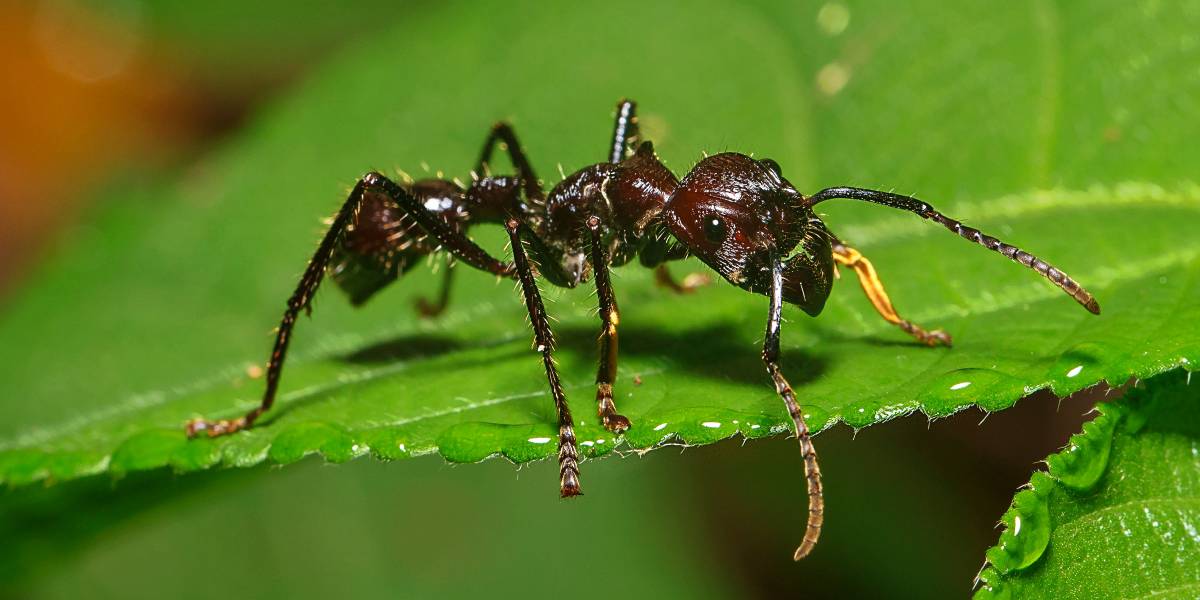
This is what ranks them among the creepiest insects in our book. This venom is laced with Poneratoxin, which is a paralyzing neurotoxin. It essentially affects one’s voltage-dependent sodium ion channels, then blocks synaptic transmission to the central nervous system. That can cause things like edema, tachycardia, and even lymphadenopathy. Pain has been described as “burning, throbbing, all-consuming pain that continues unabated for up to 24 hours” by sting expert, Justin O. Schmidt.
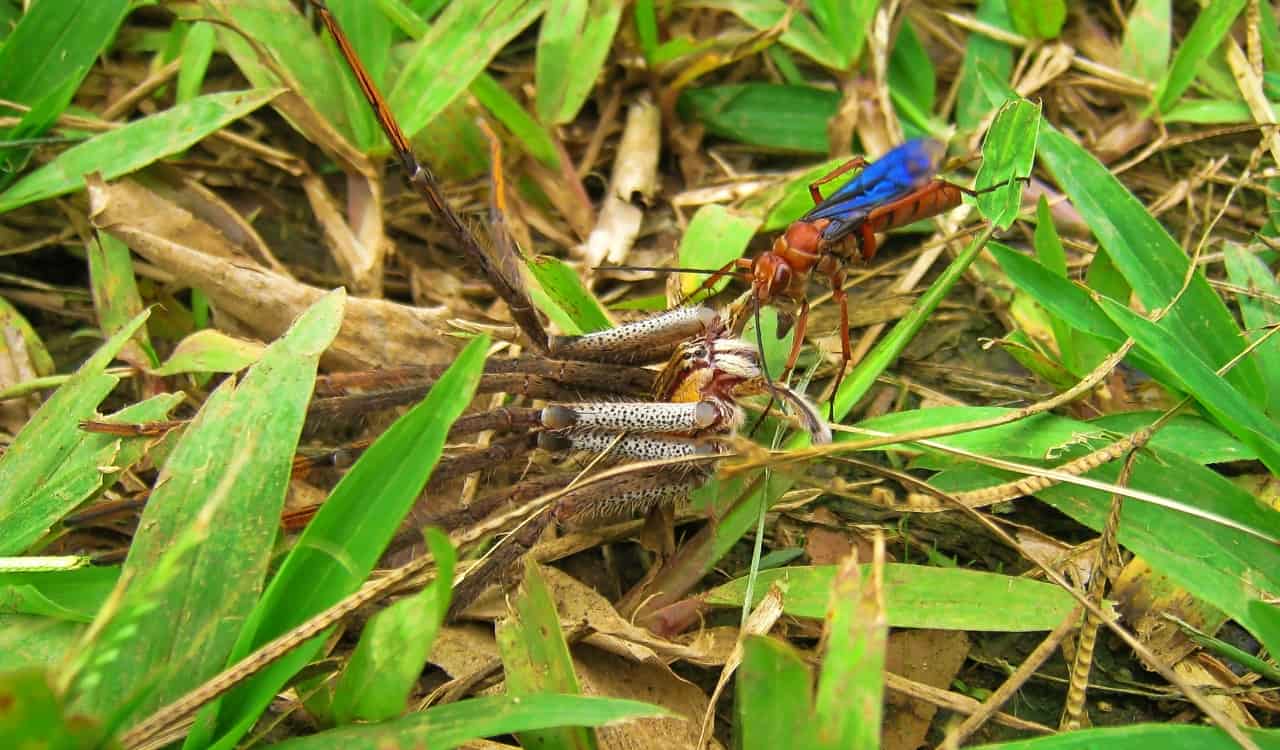
Tarantula Hawk Wasp
- Regions Found: India, Southeast Africa, Australia, North & South America
- Scientific Order: Hymenoptera
We should first mention that the Tarantula Hawk Wasp has one of the most painful stings on the planet. Justin O. Schmidt gave it a 4.0, his highest pain score. While this is pretty bad, that is not what makes them one of the creepiest insects on the planet. This wasp species preys on tarantula spiders. They are also a form of parasitic wasp too. The species will sting a tarantula between its legs, which will paralyze the creature.
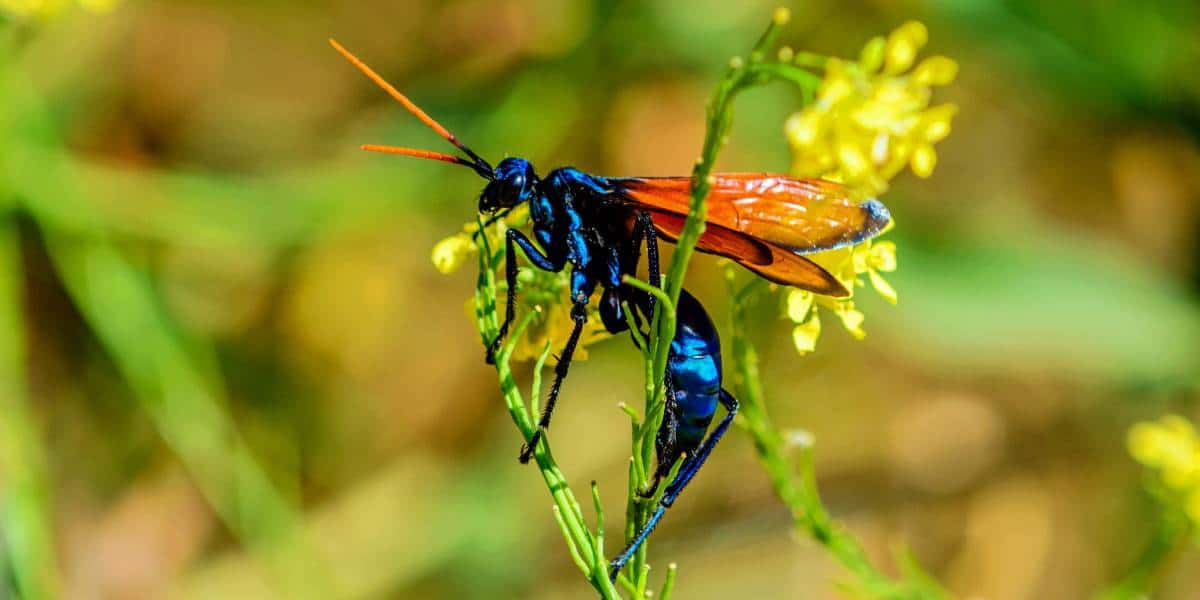
It will then be dragged back to the wasp’s nest where it’ll feed on the spider but will leave vital organs intact. A female will lay one single egg inside of the tarantula. Once the egg hatches, this wasp larva will literally eat on the still living tarantula. Of course, the larva will finish it off by eating its vital organs from inside. Upon consuming the spider, the wasp when exits from the spider’s body.

